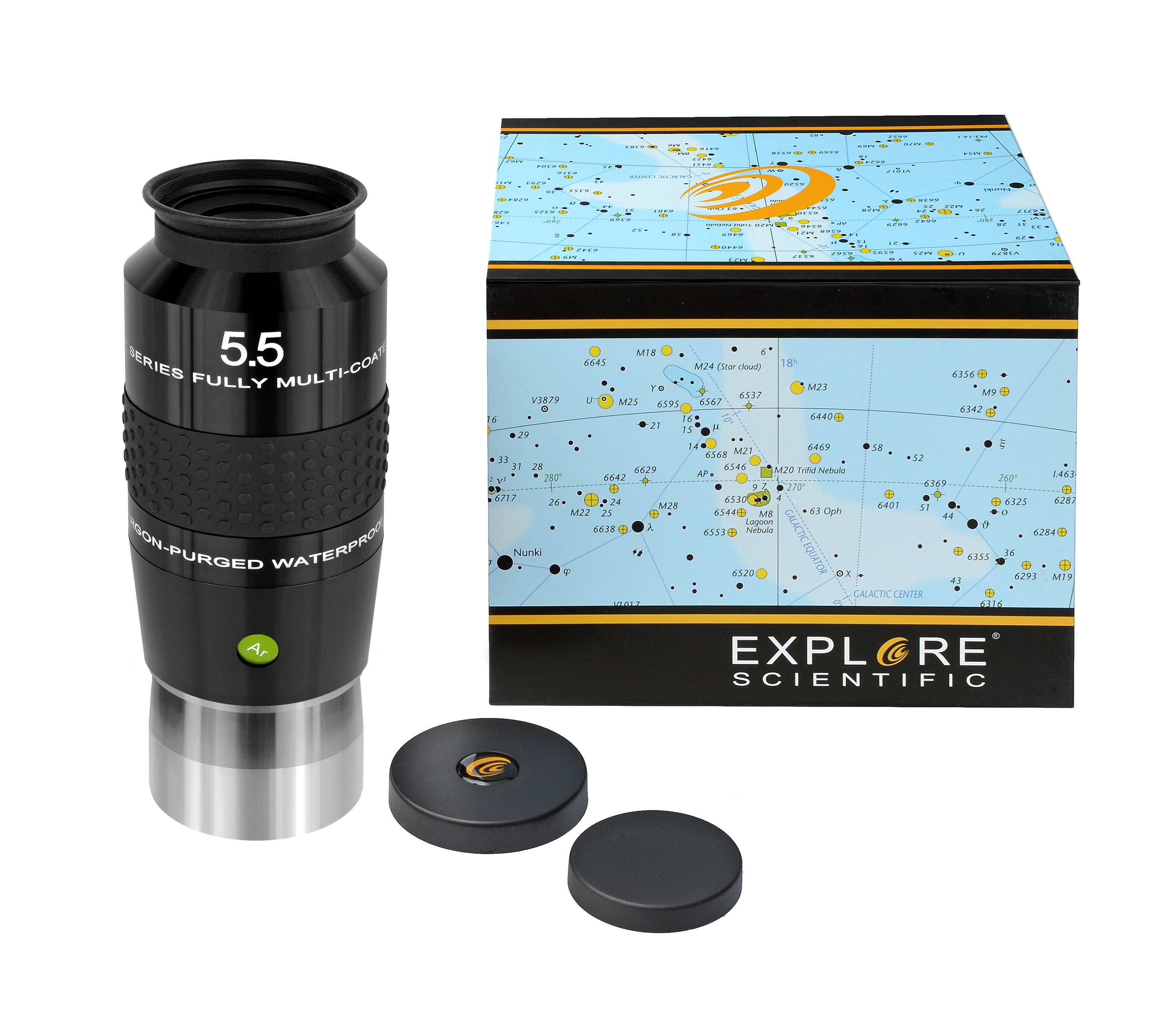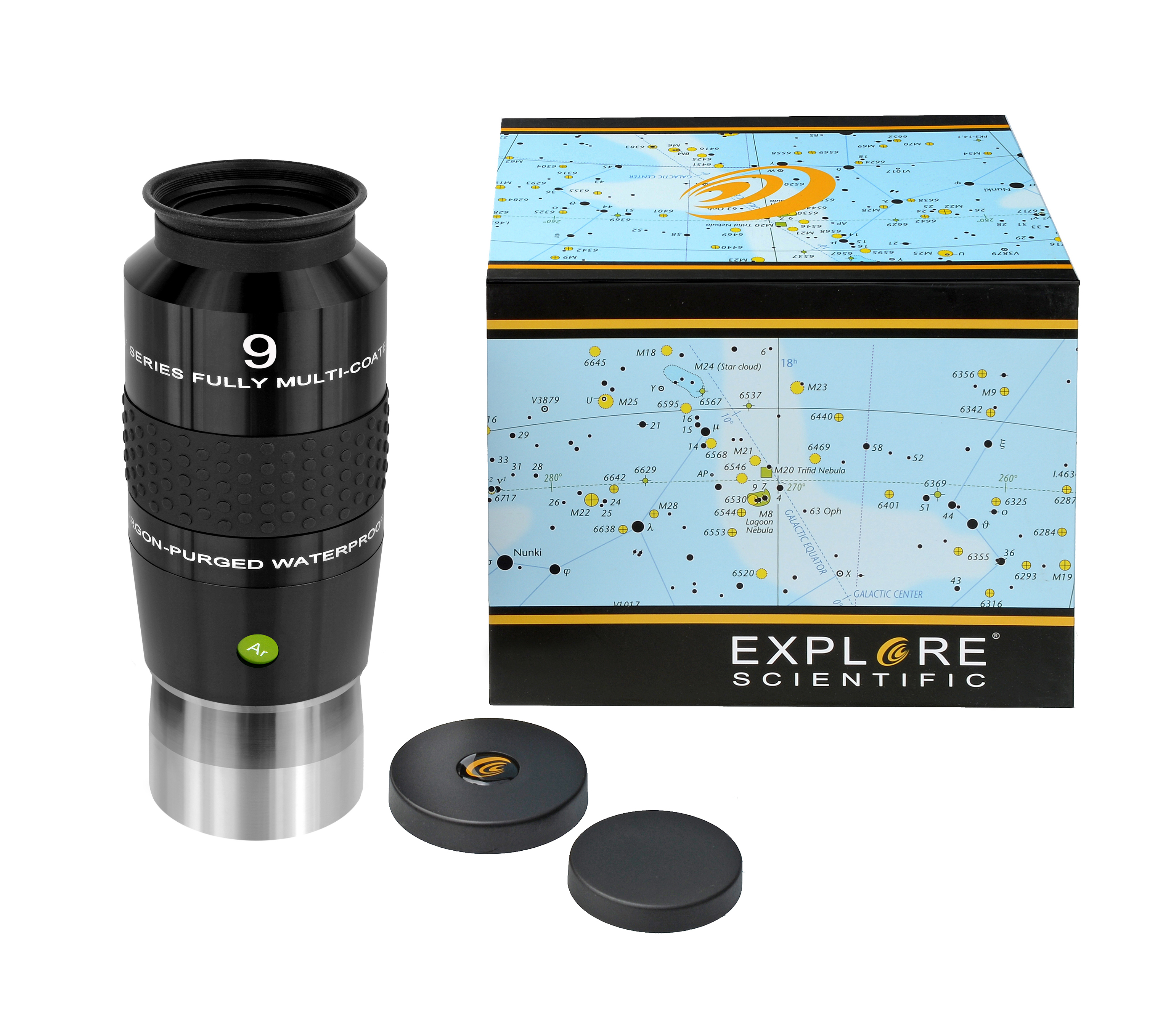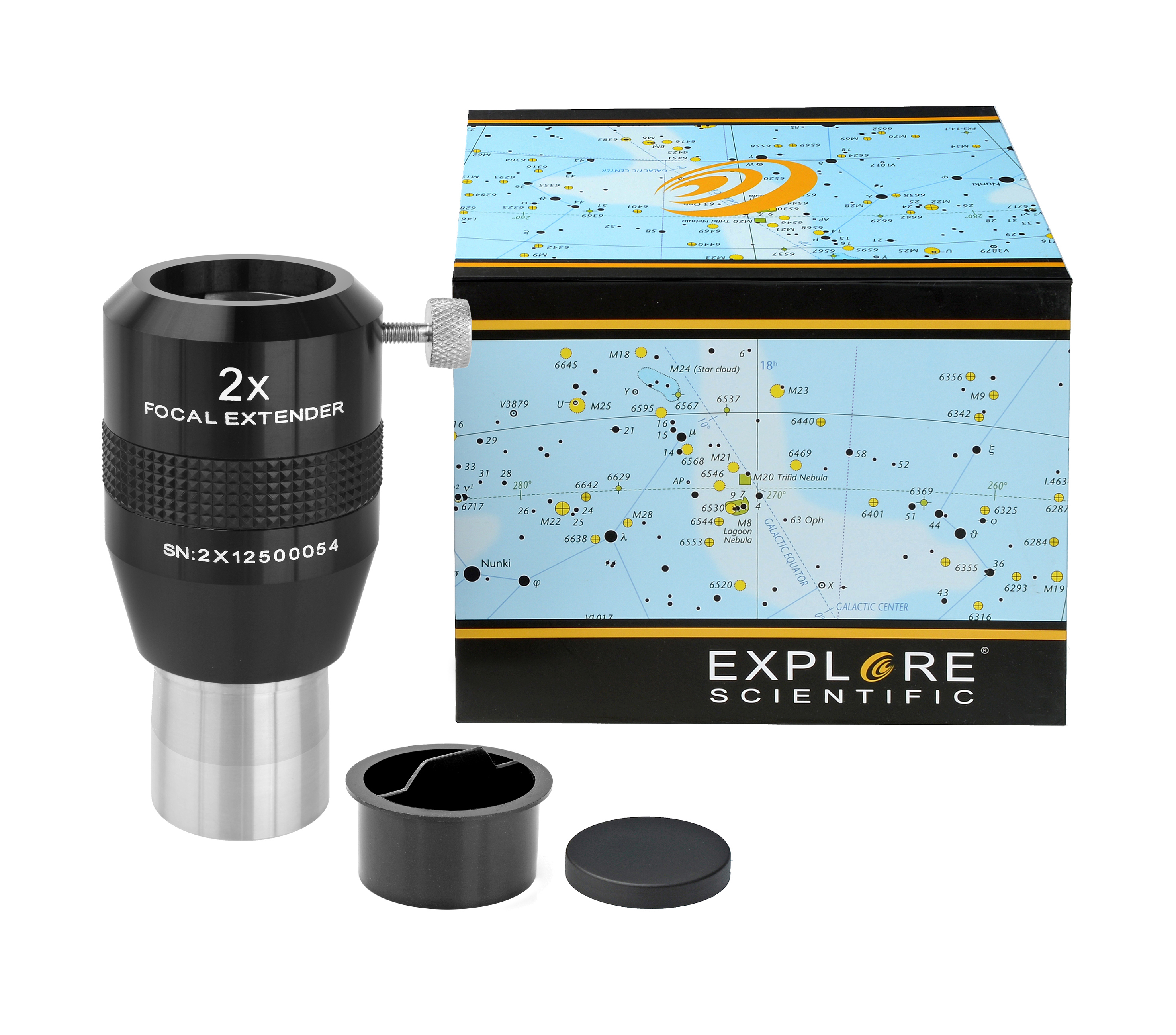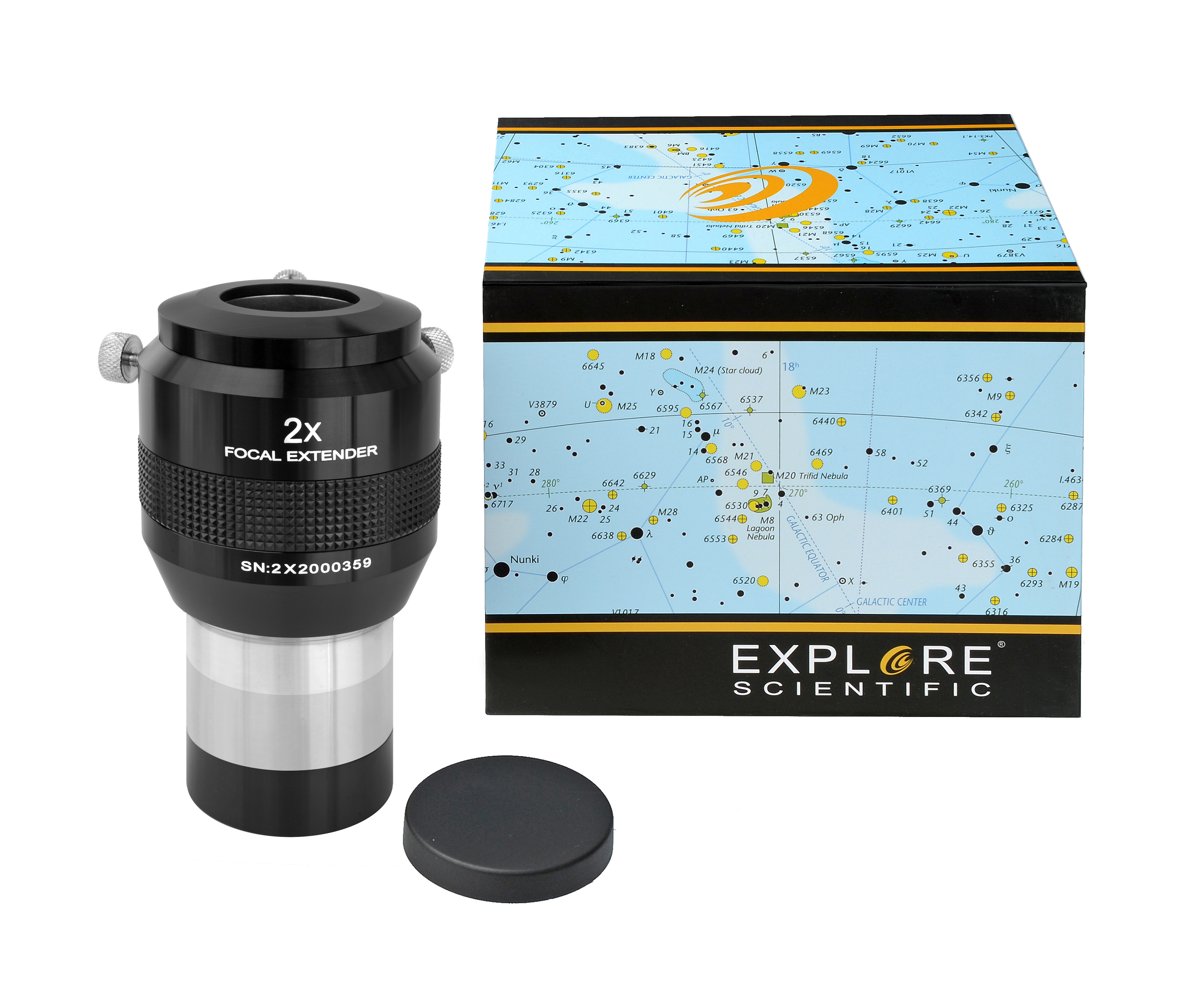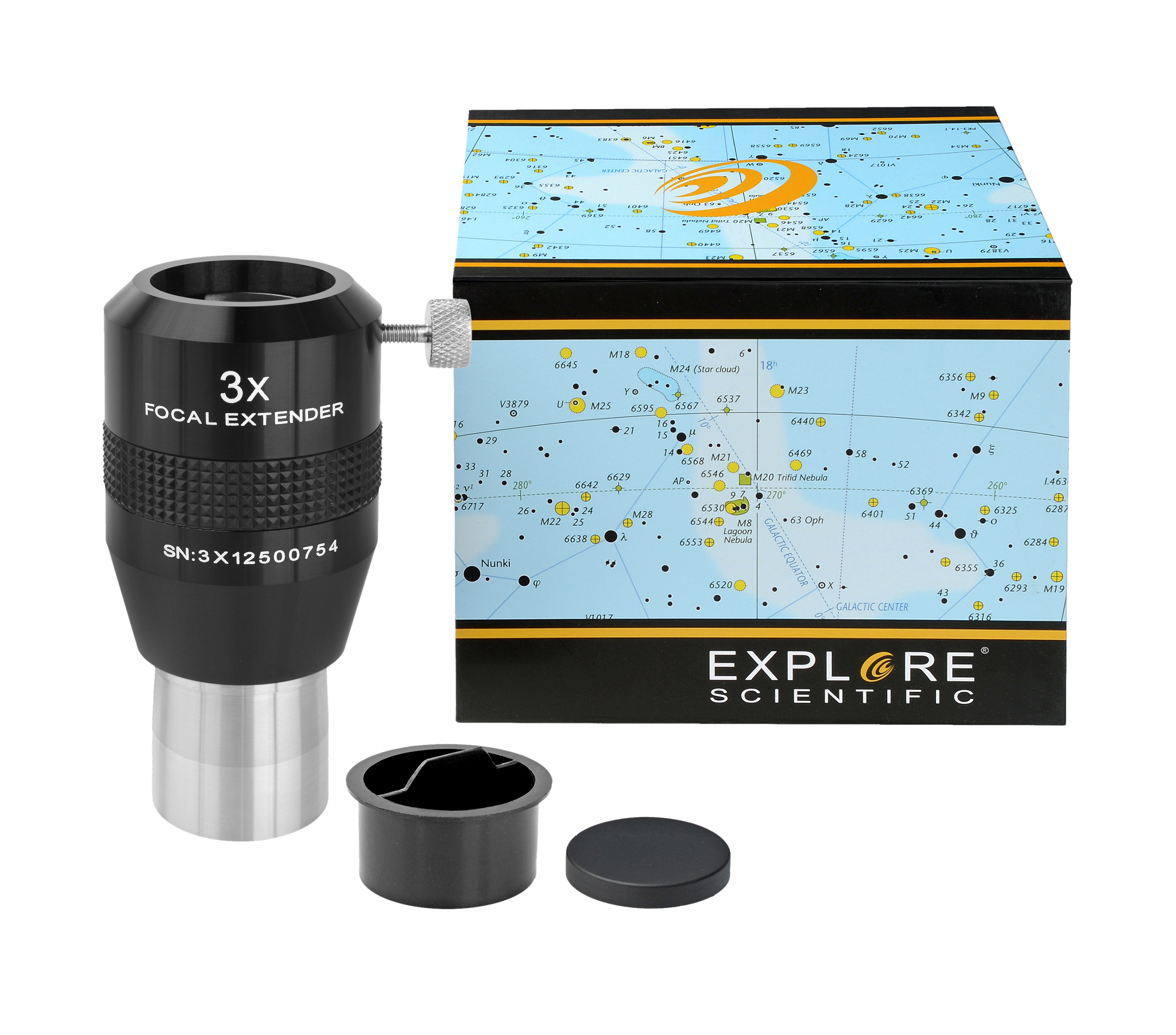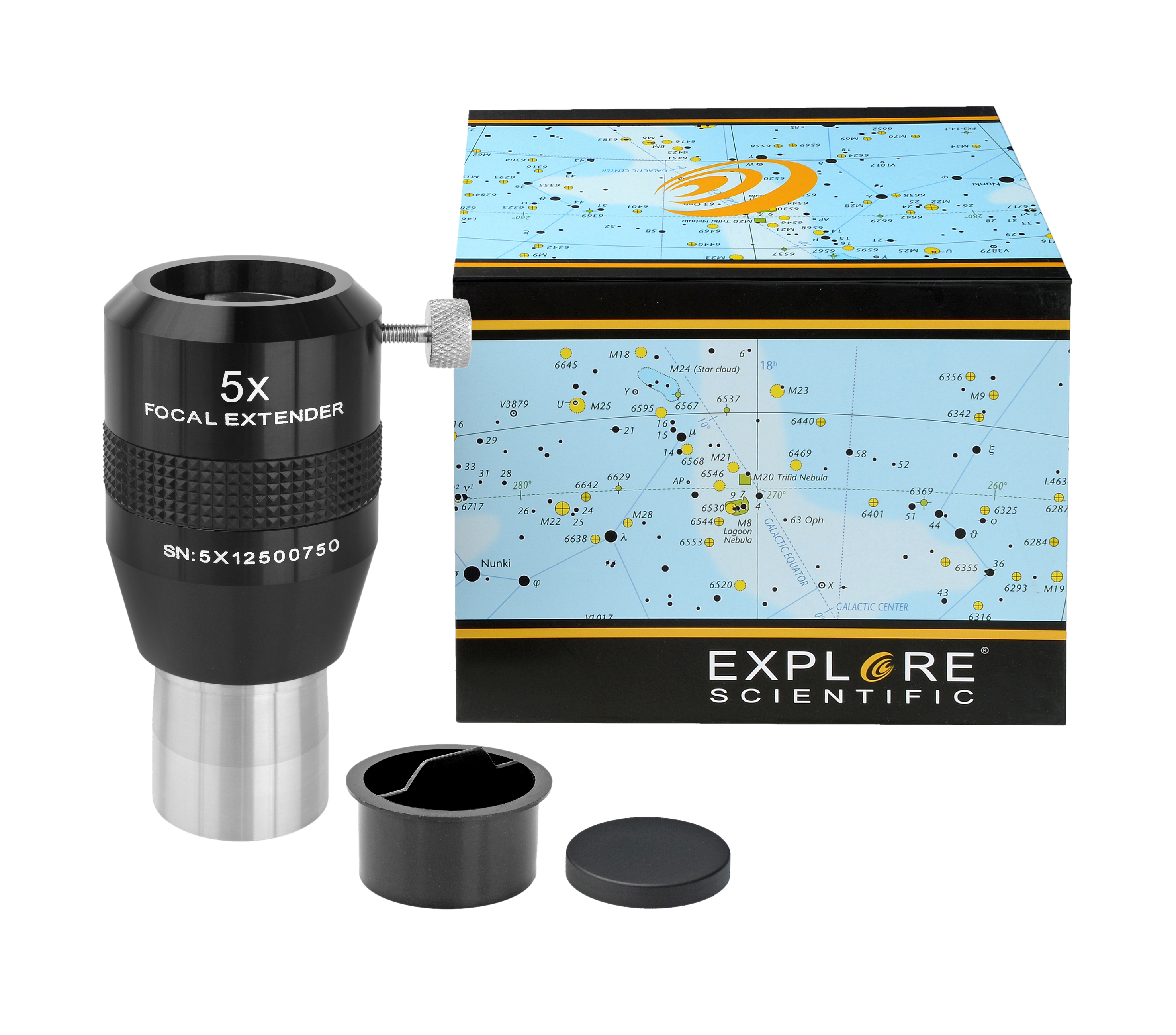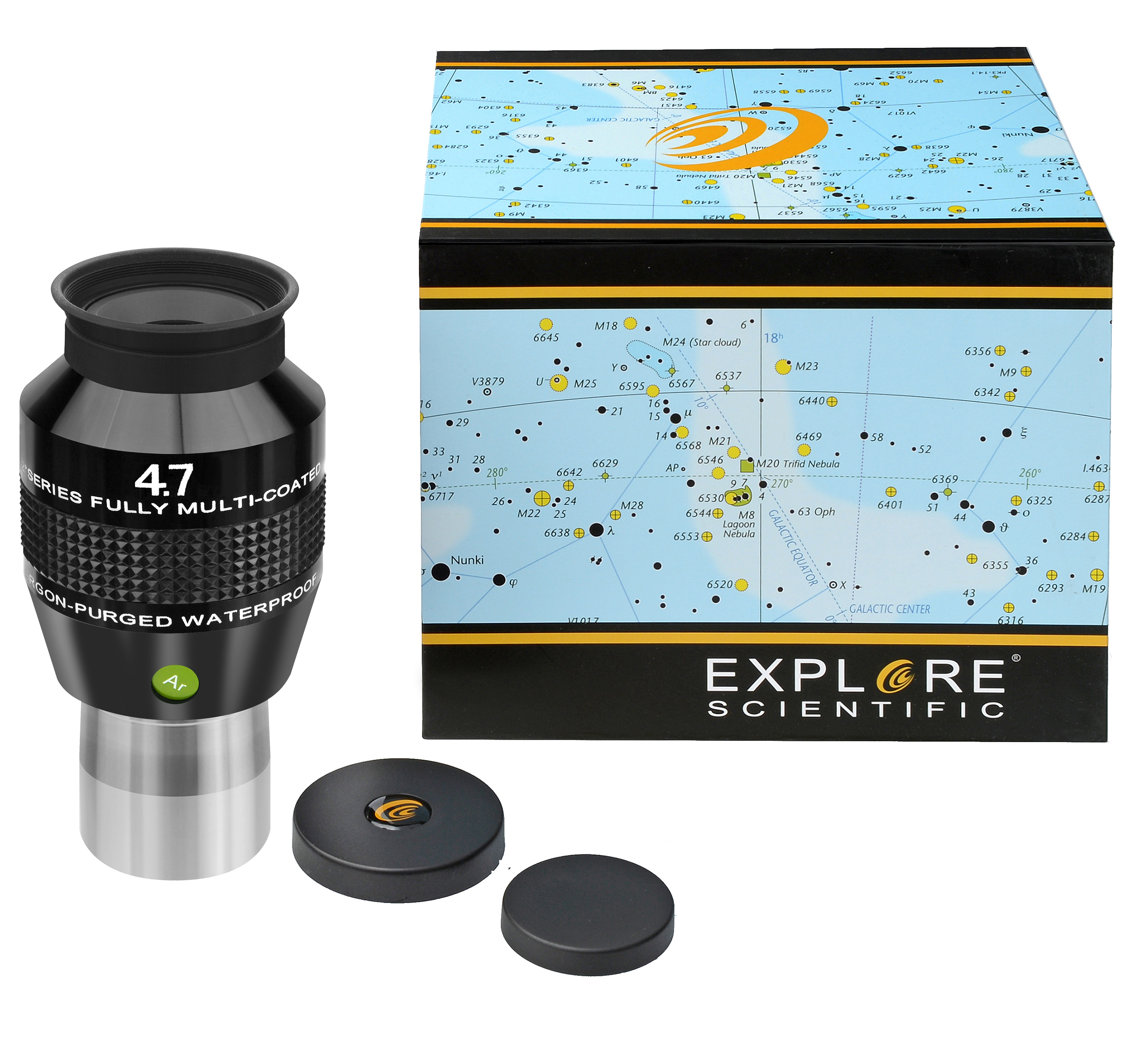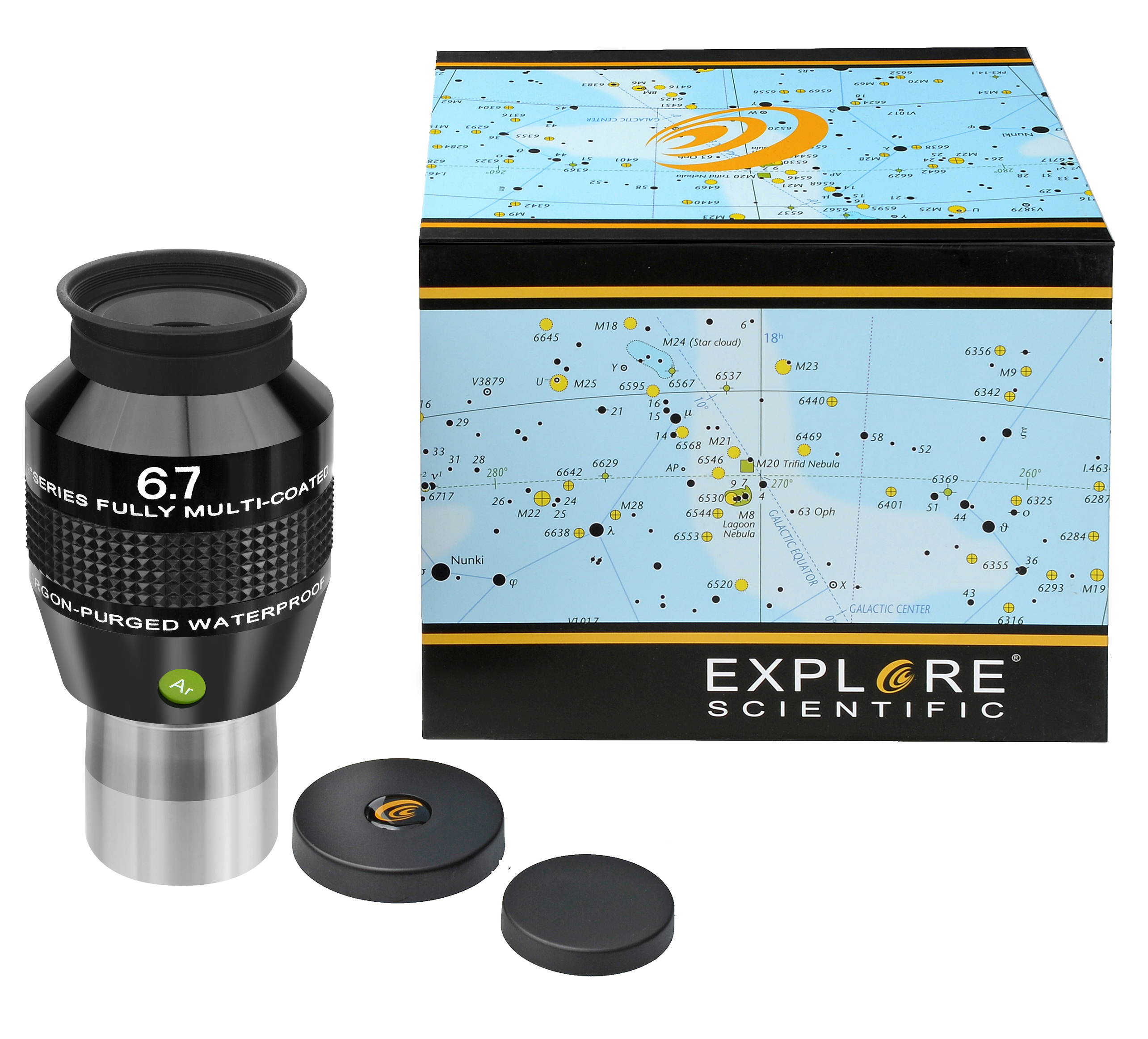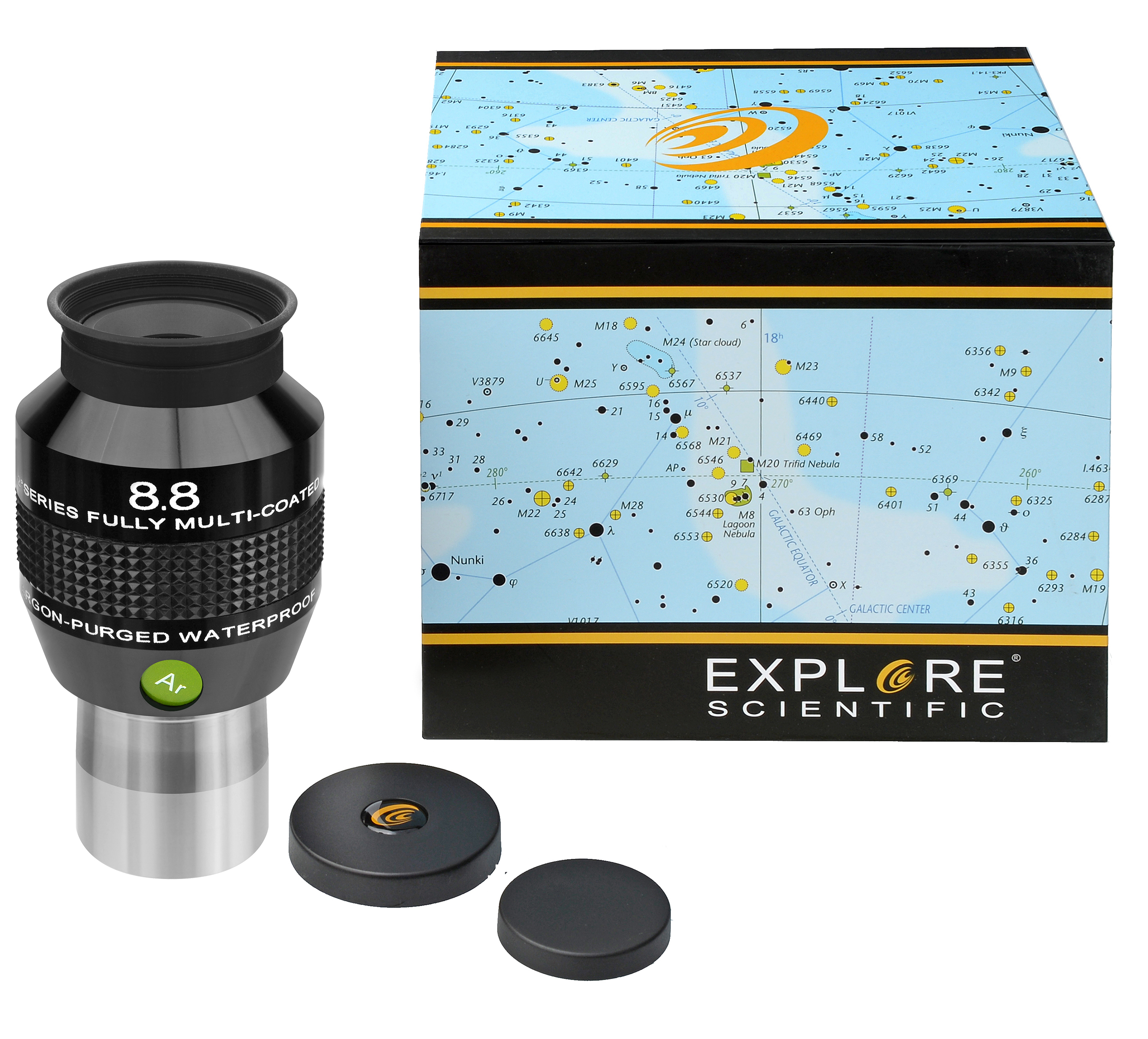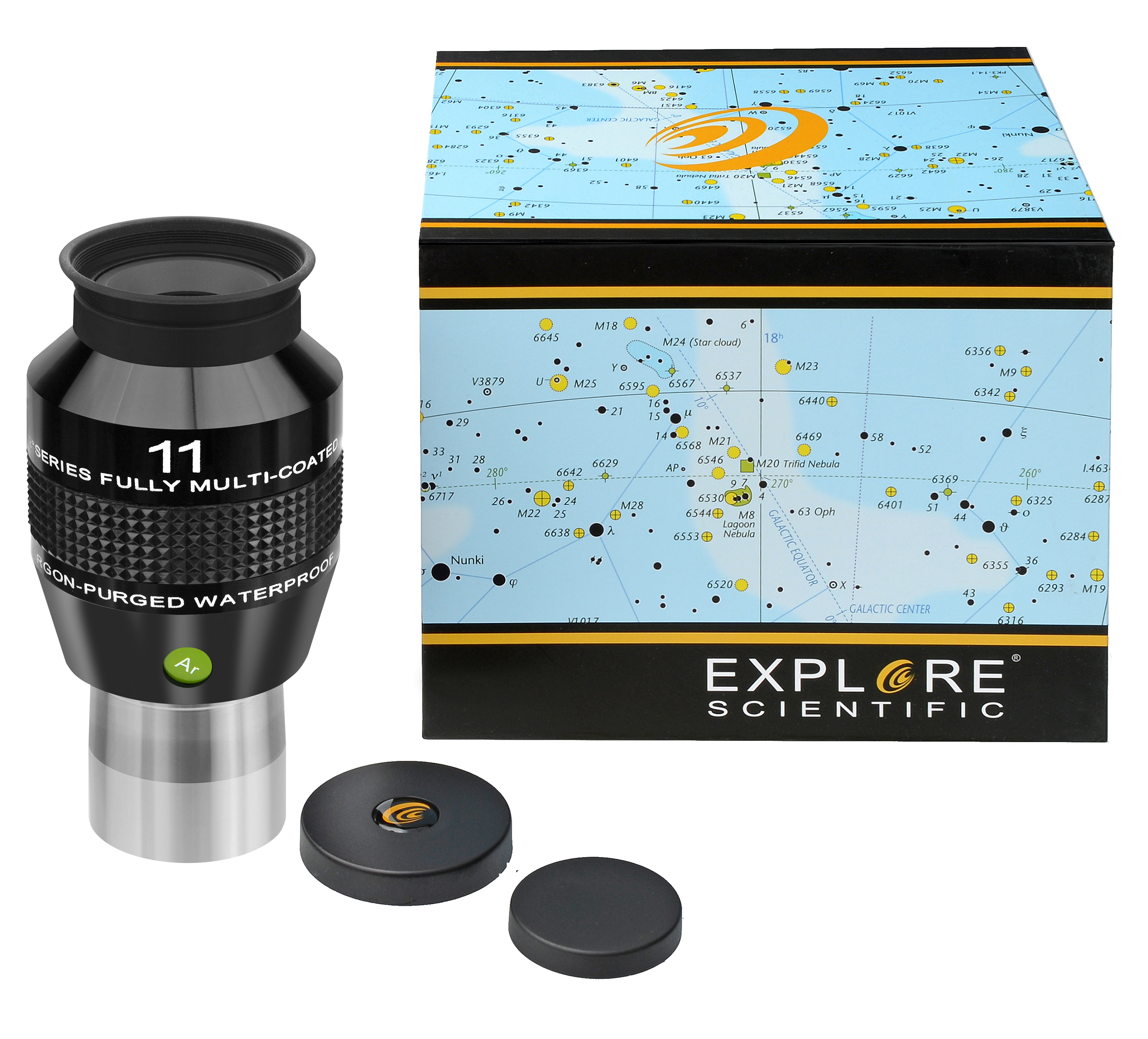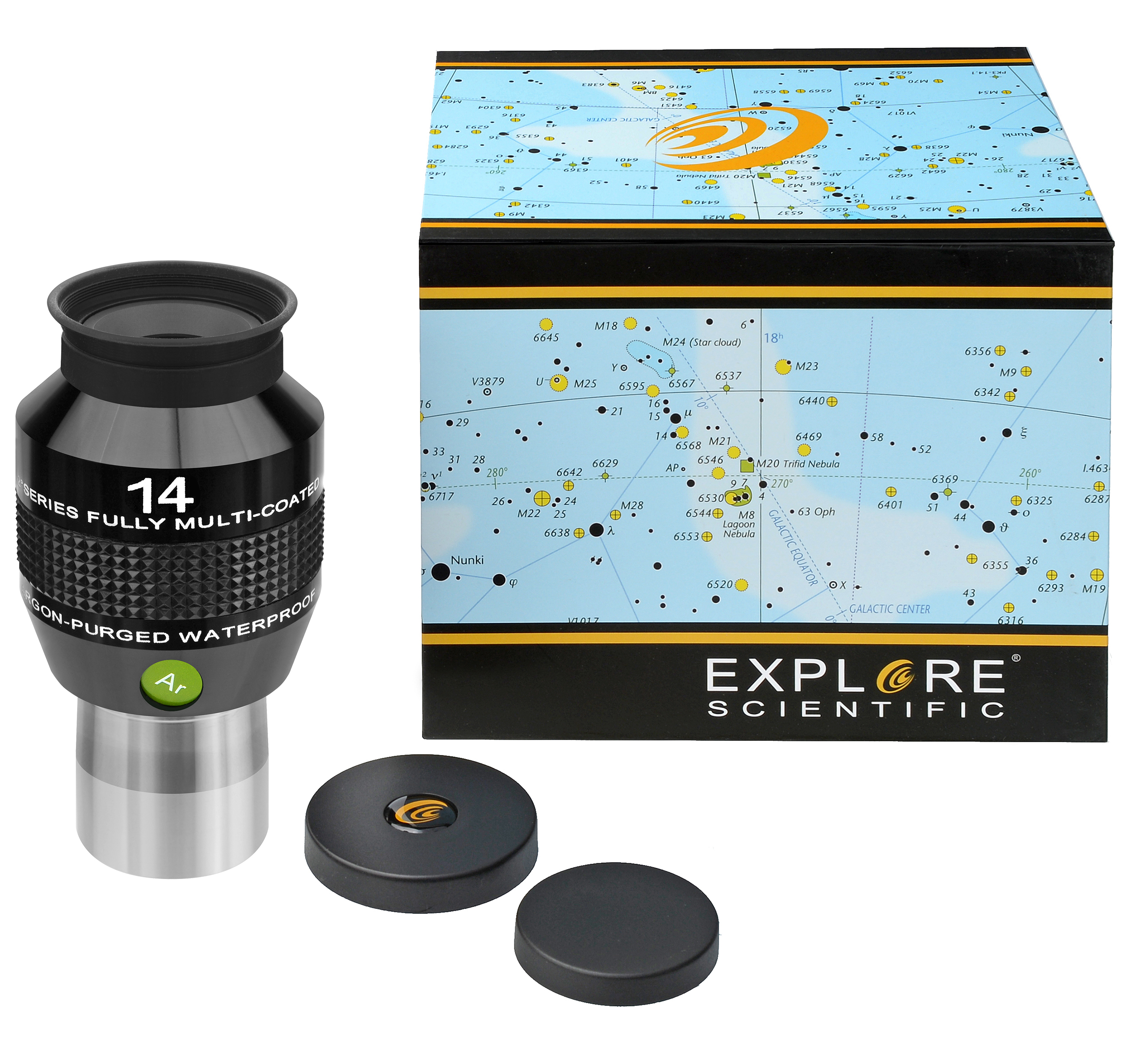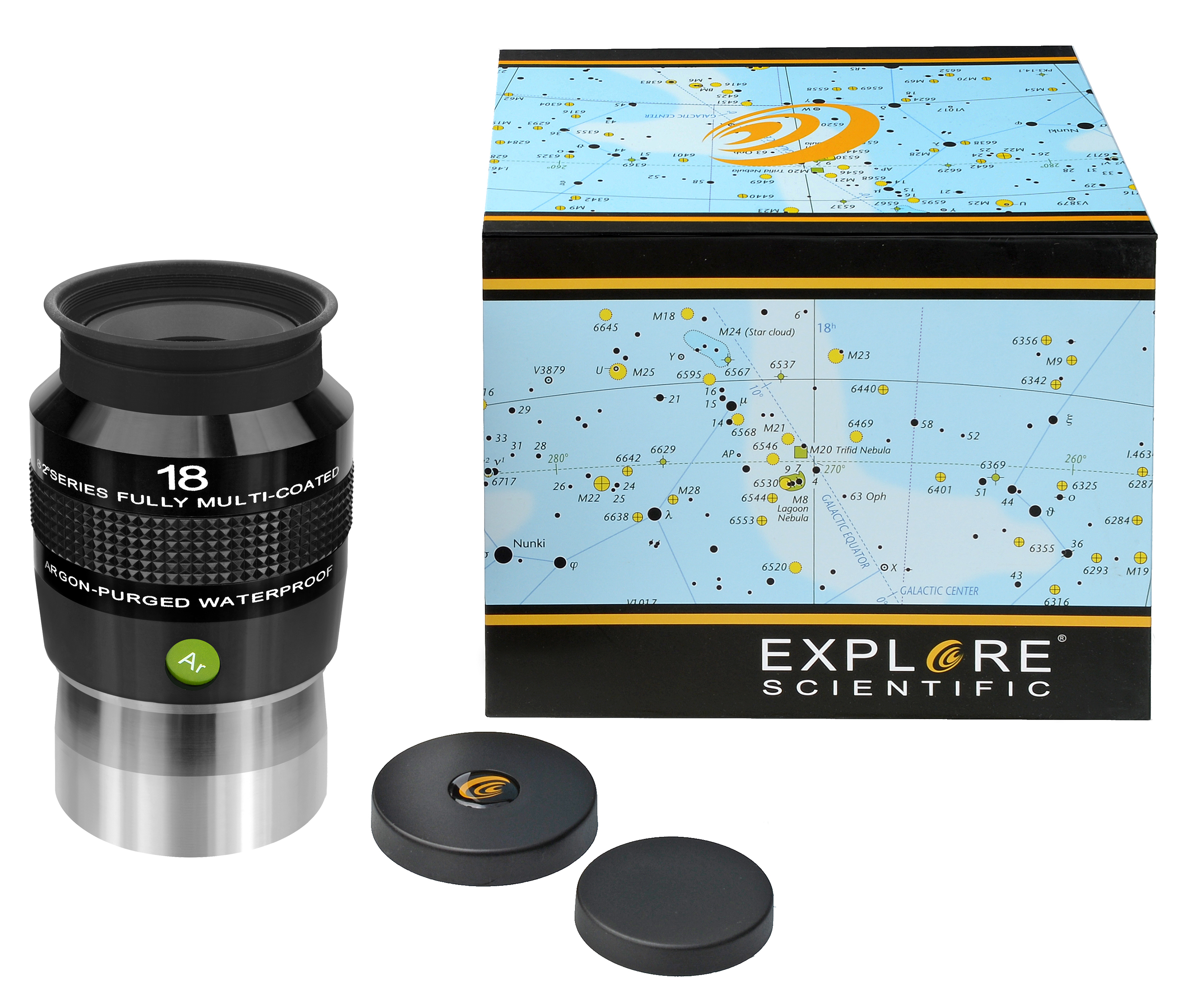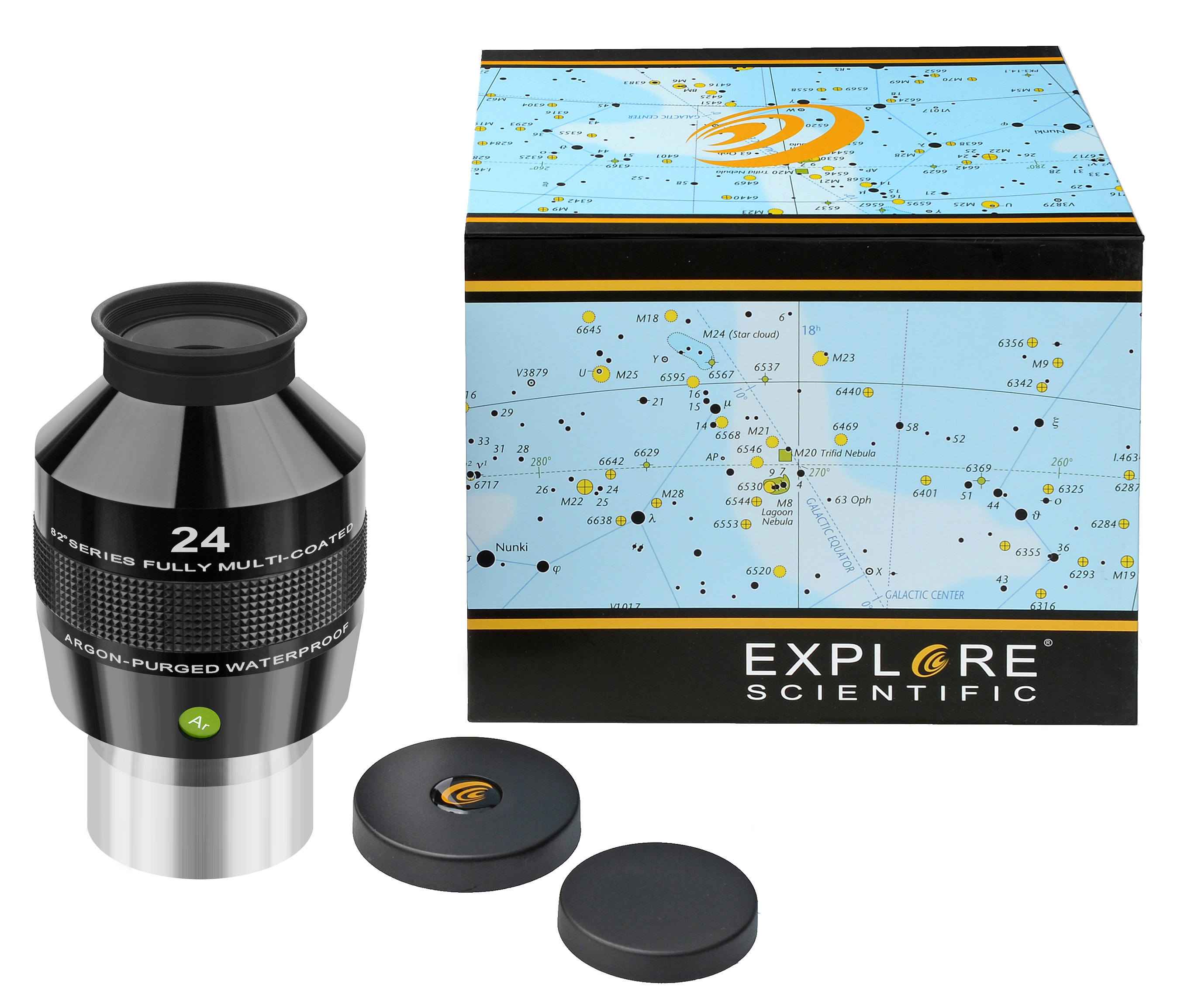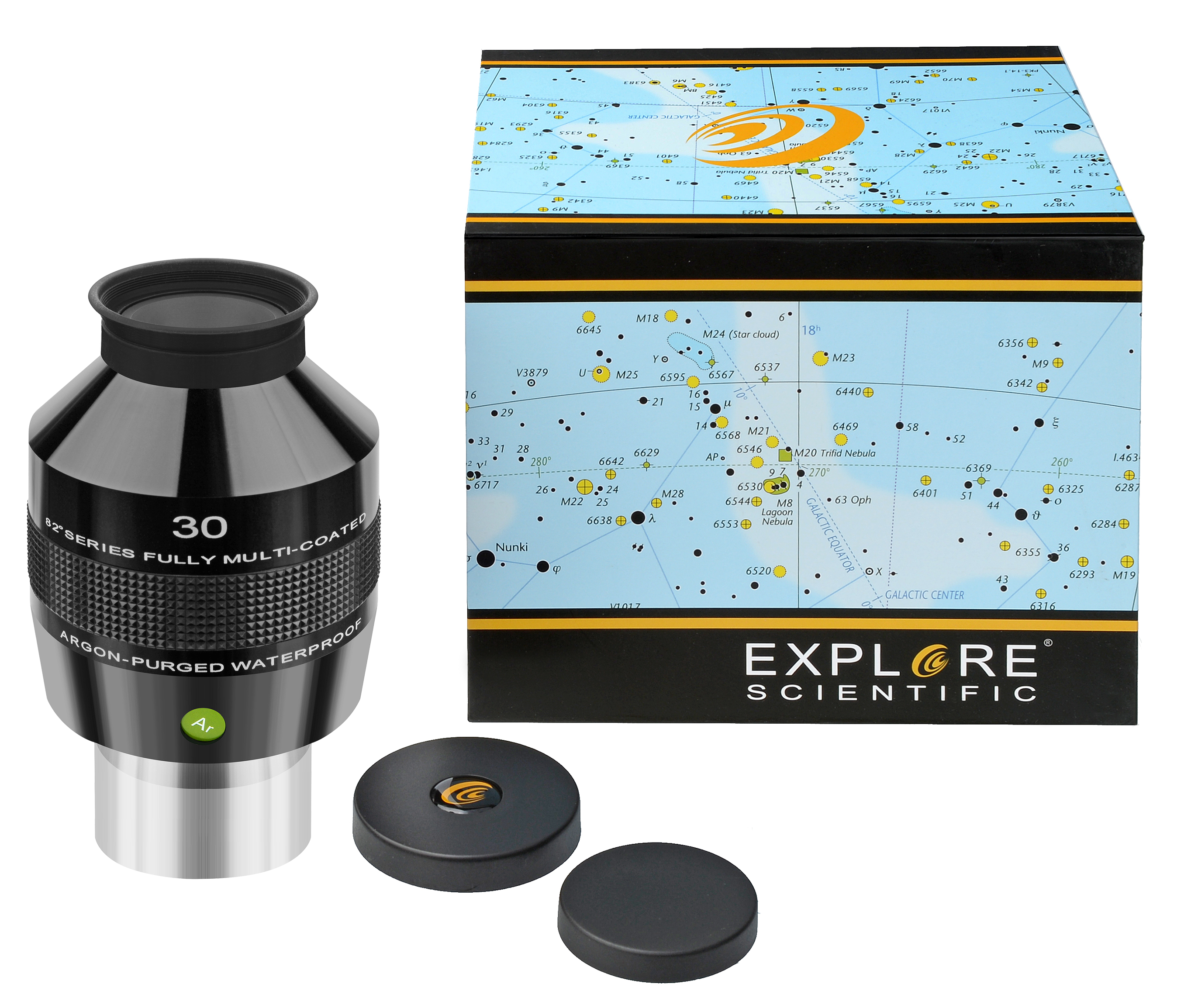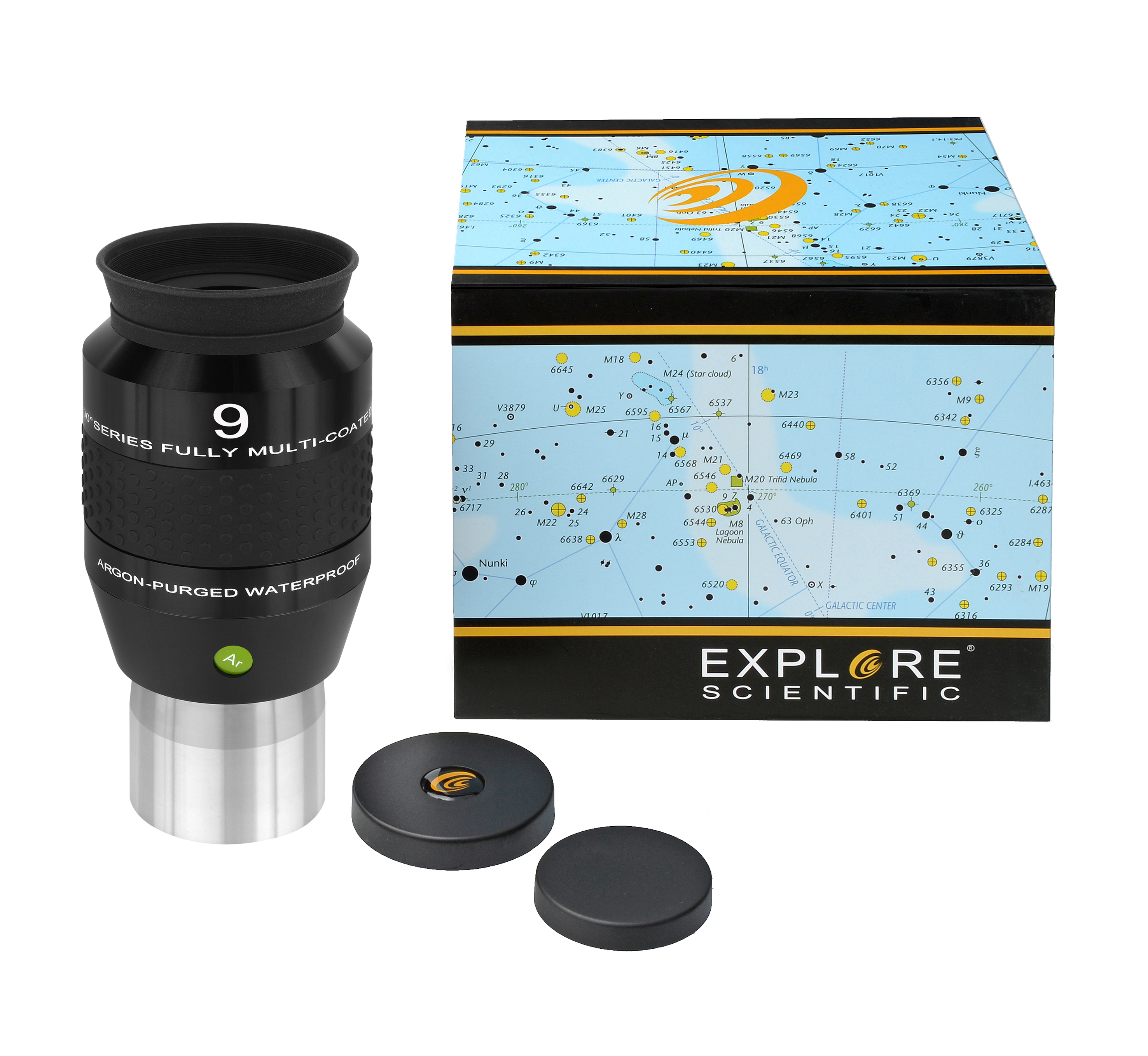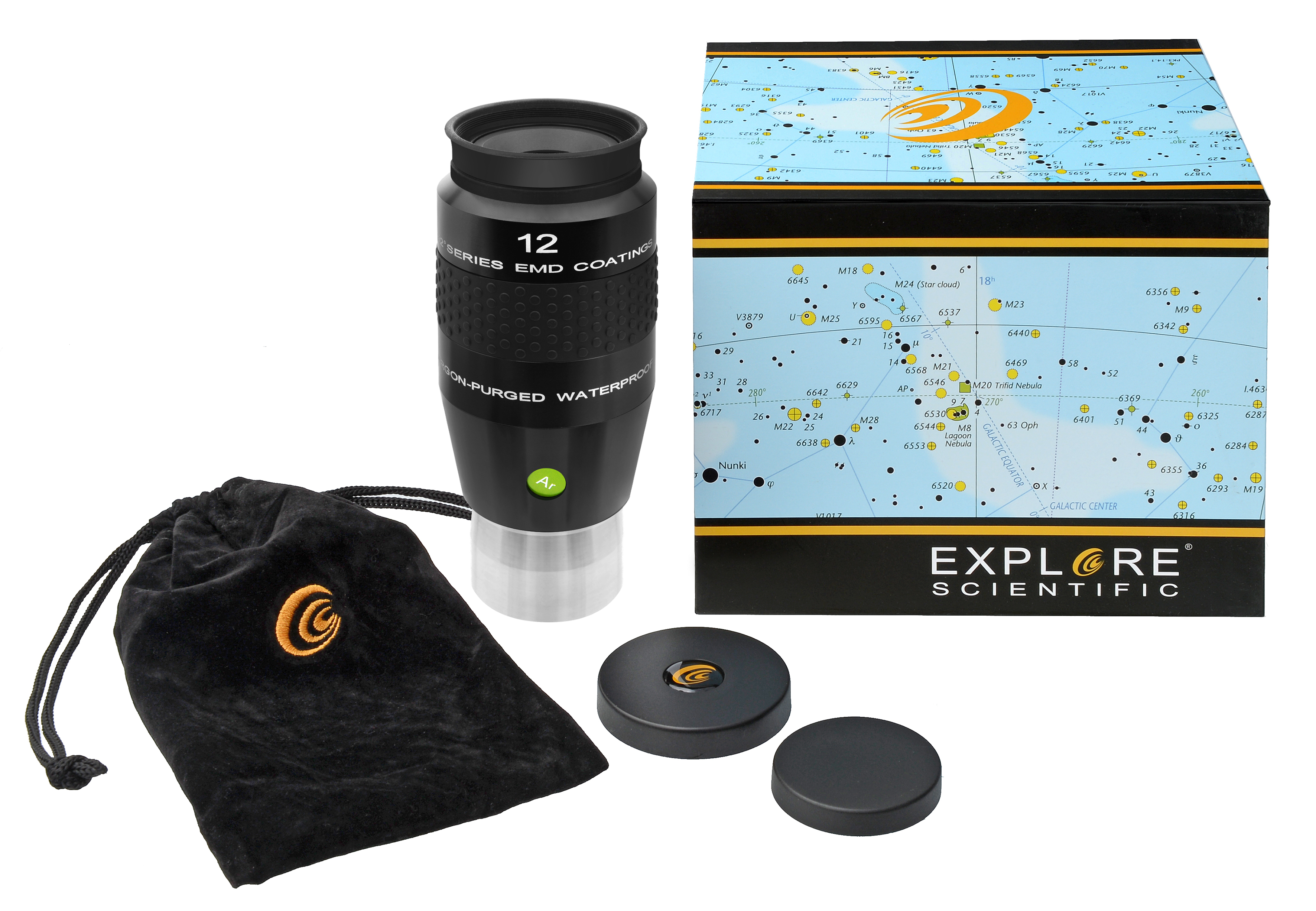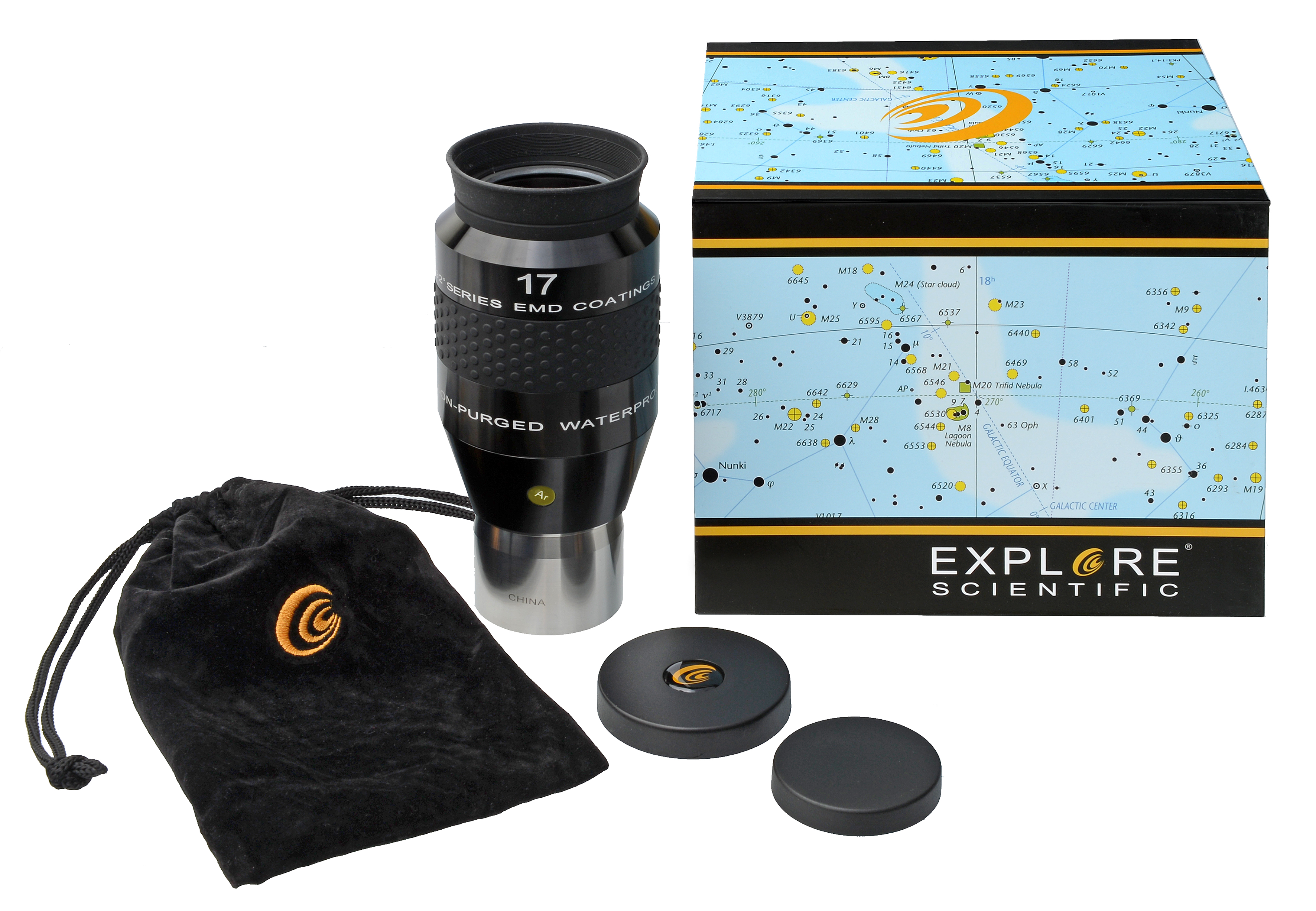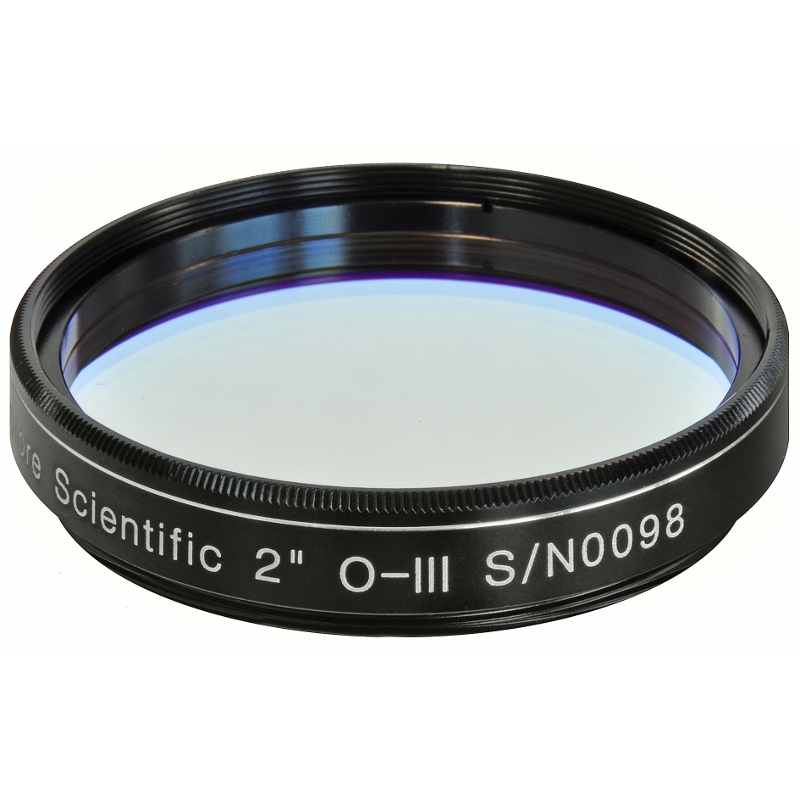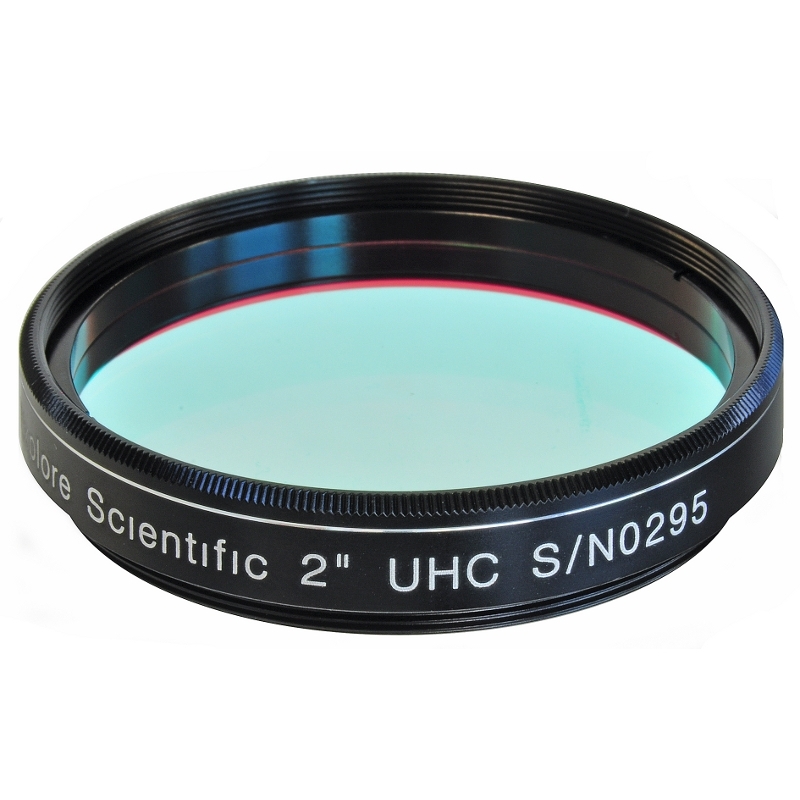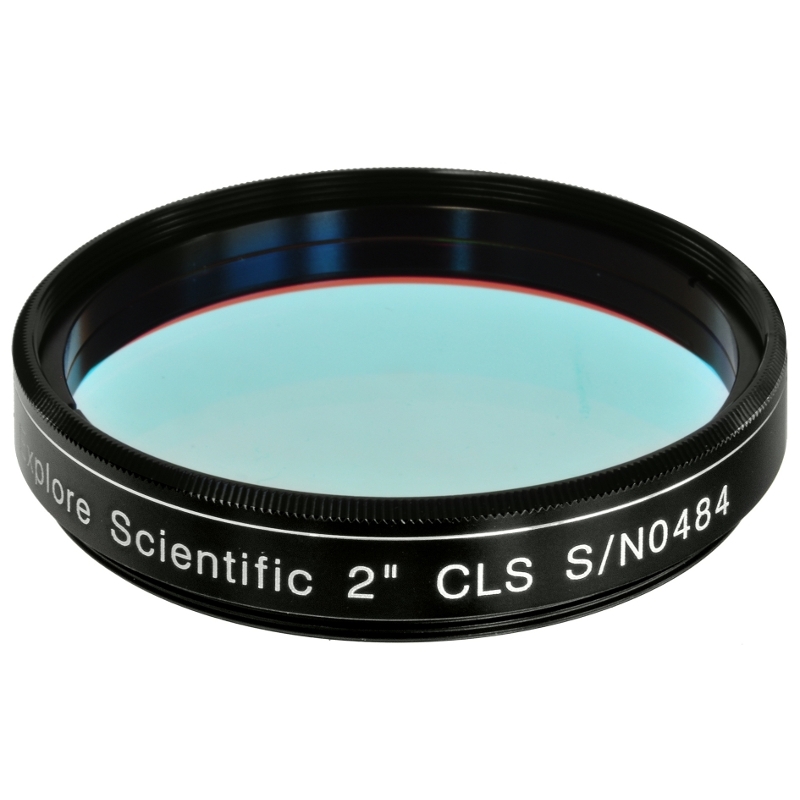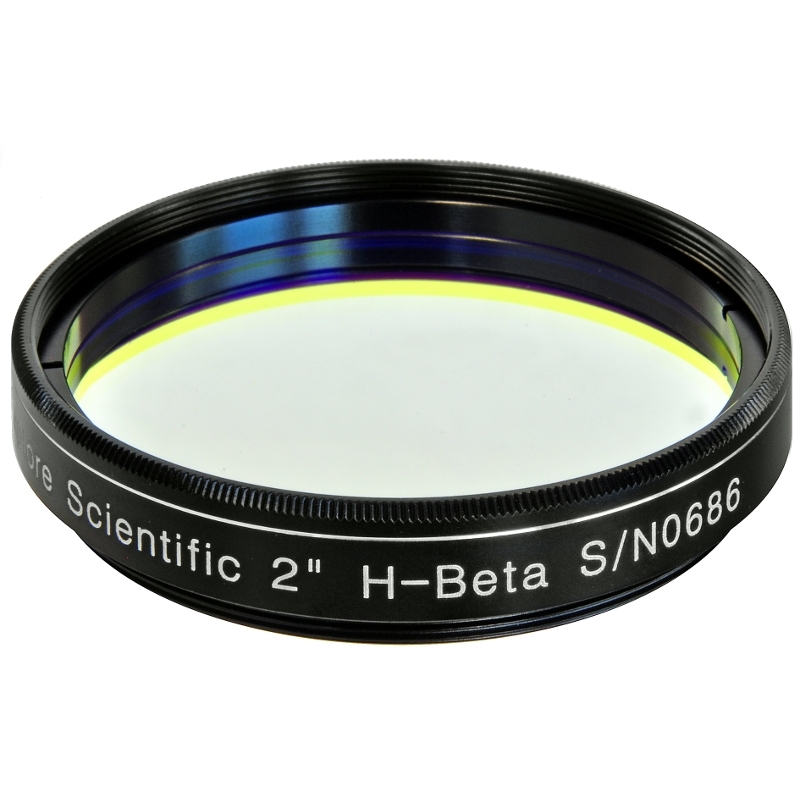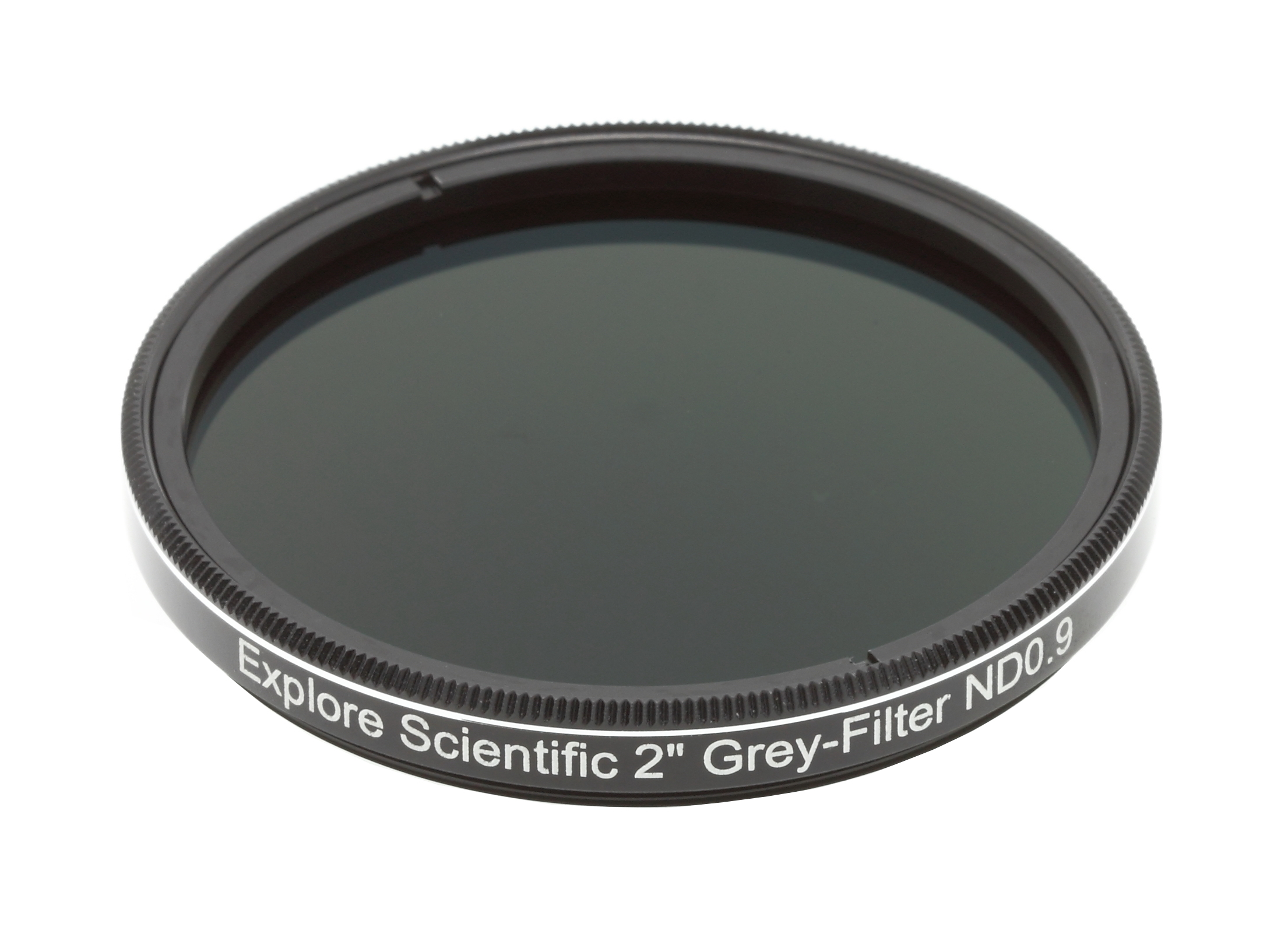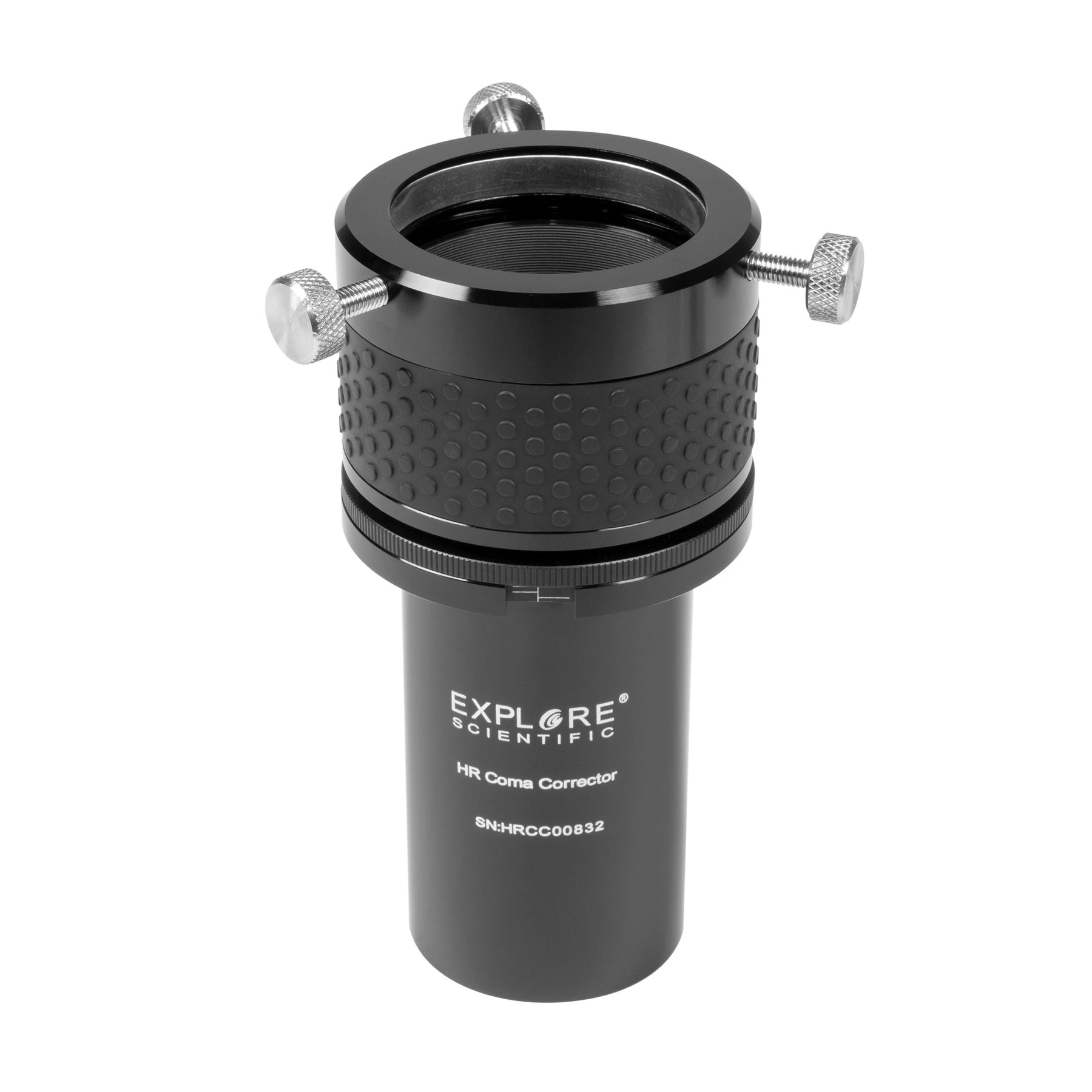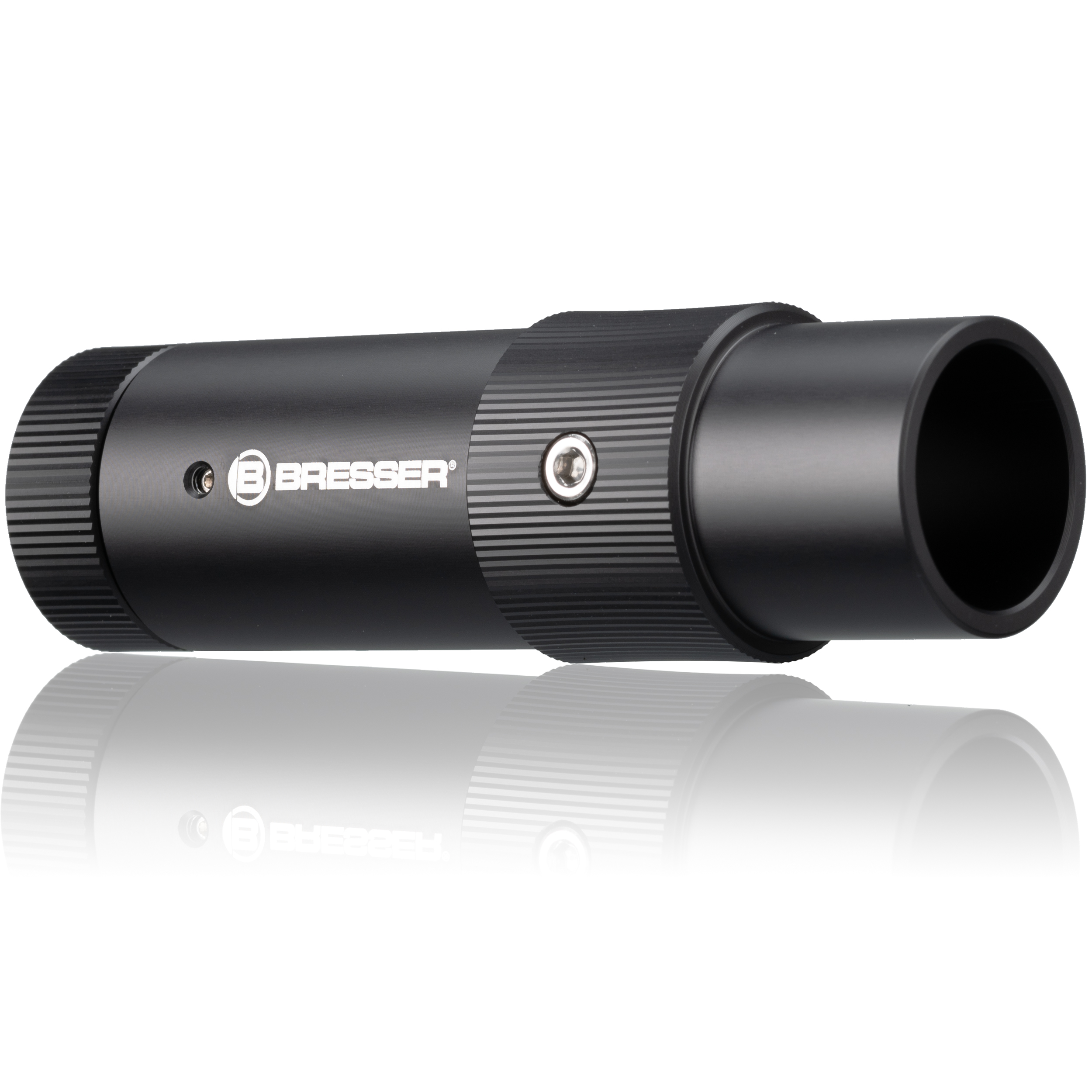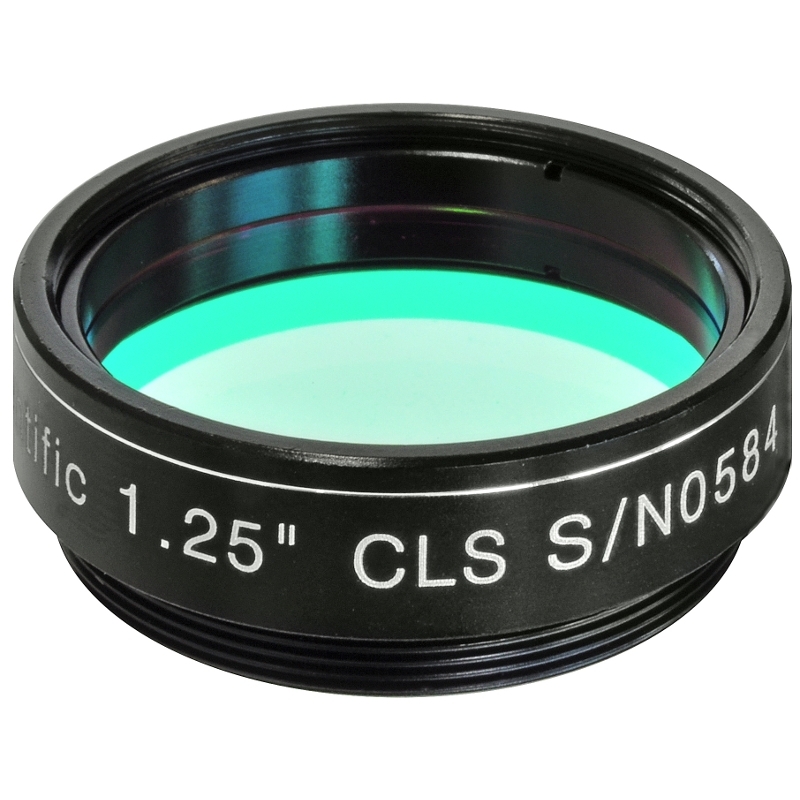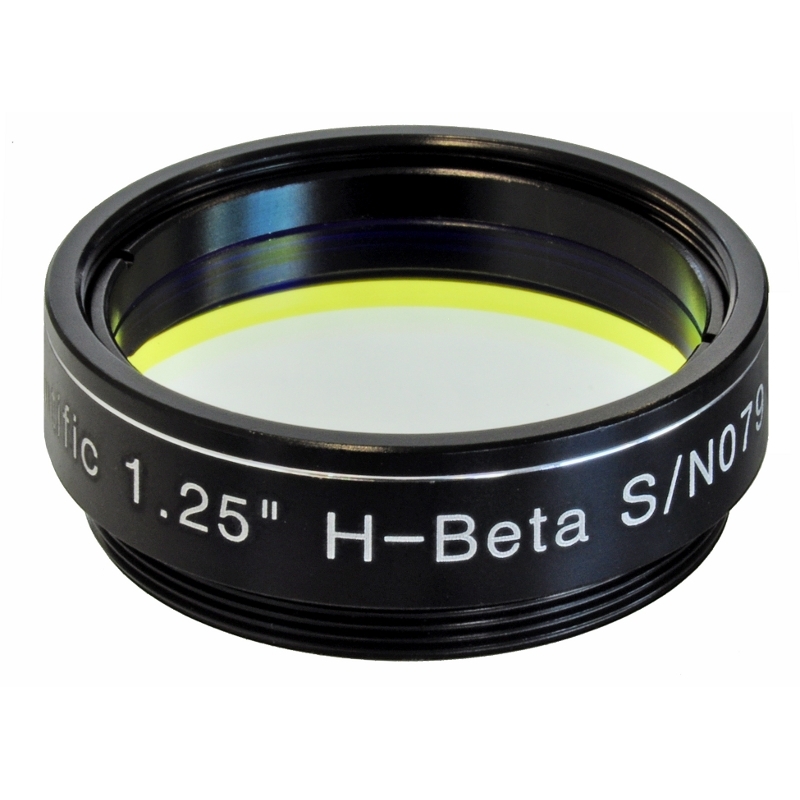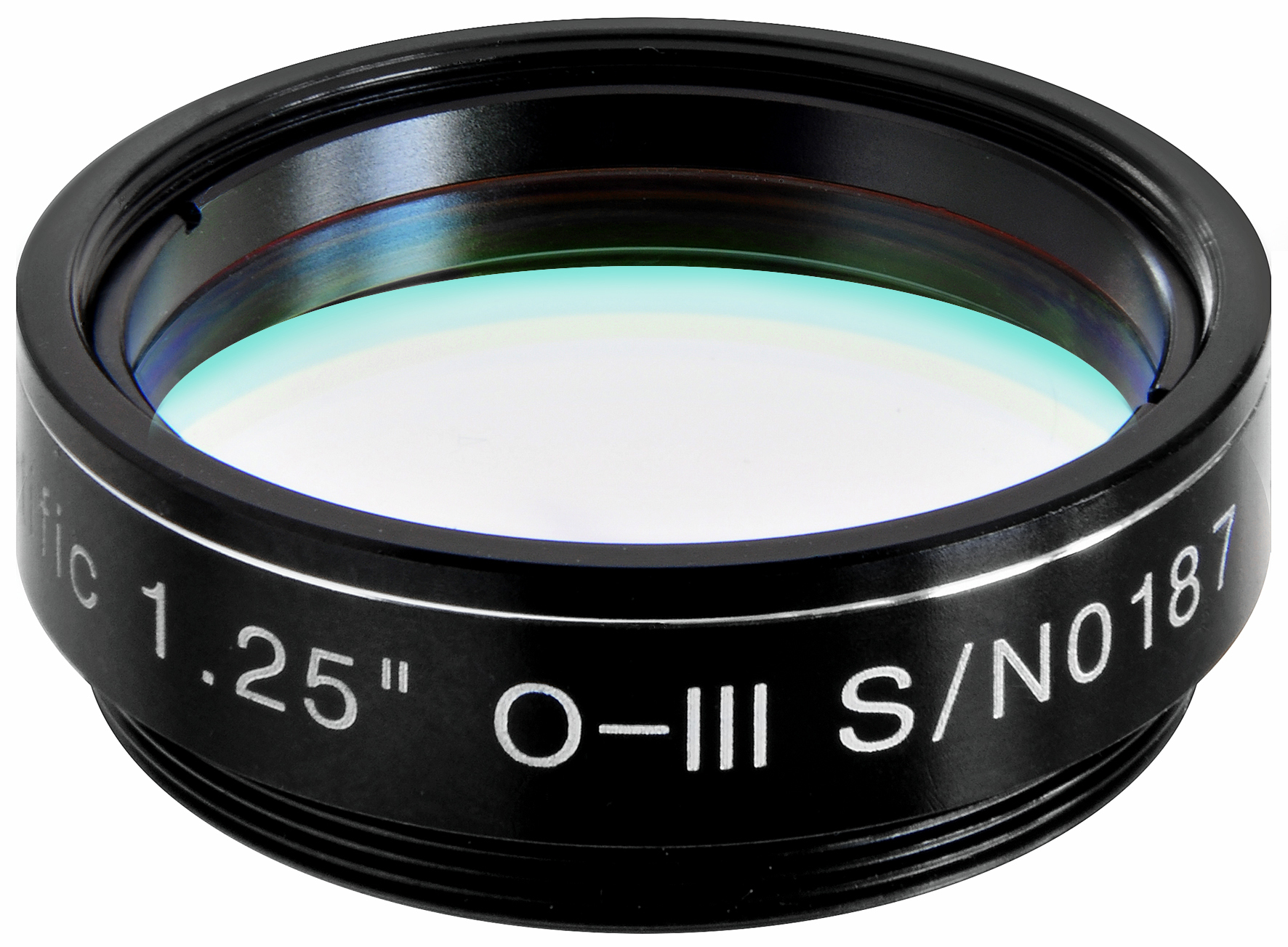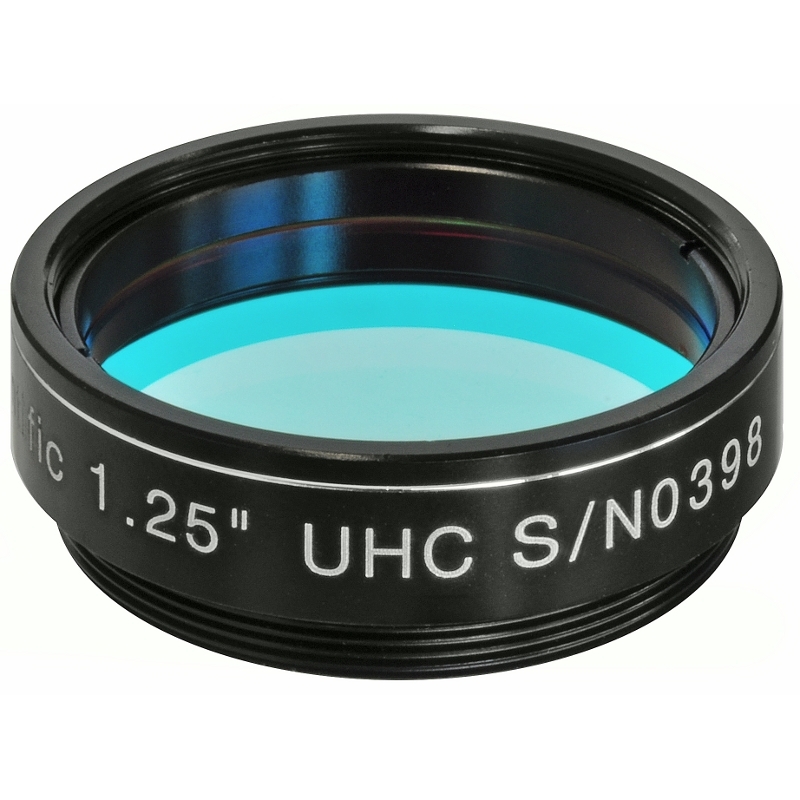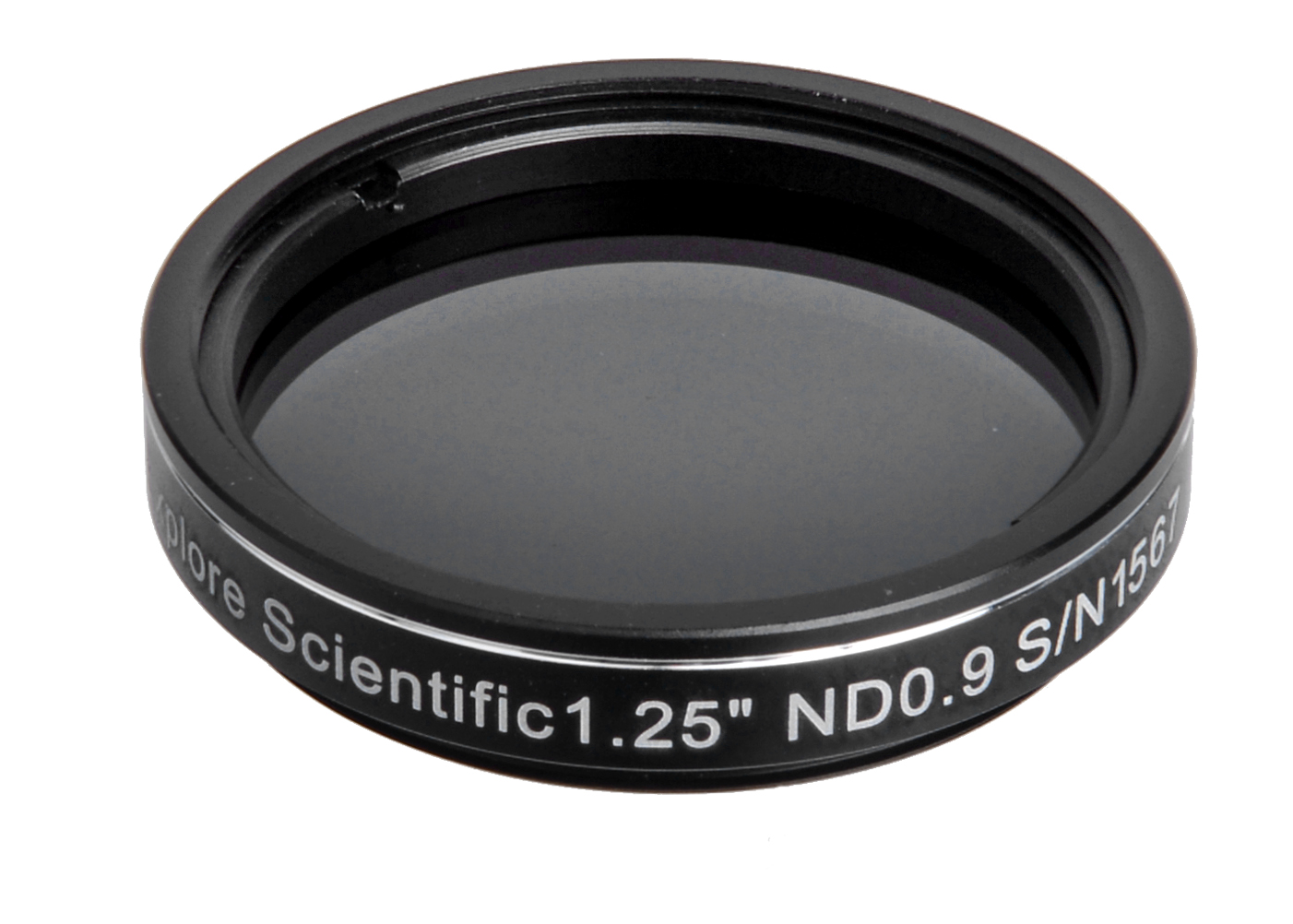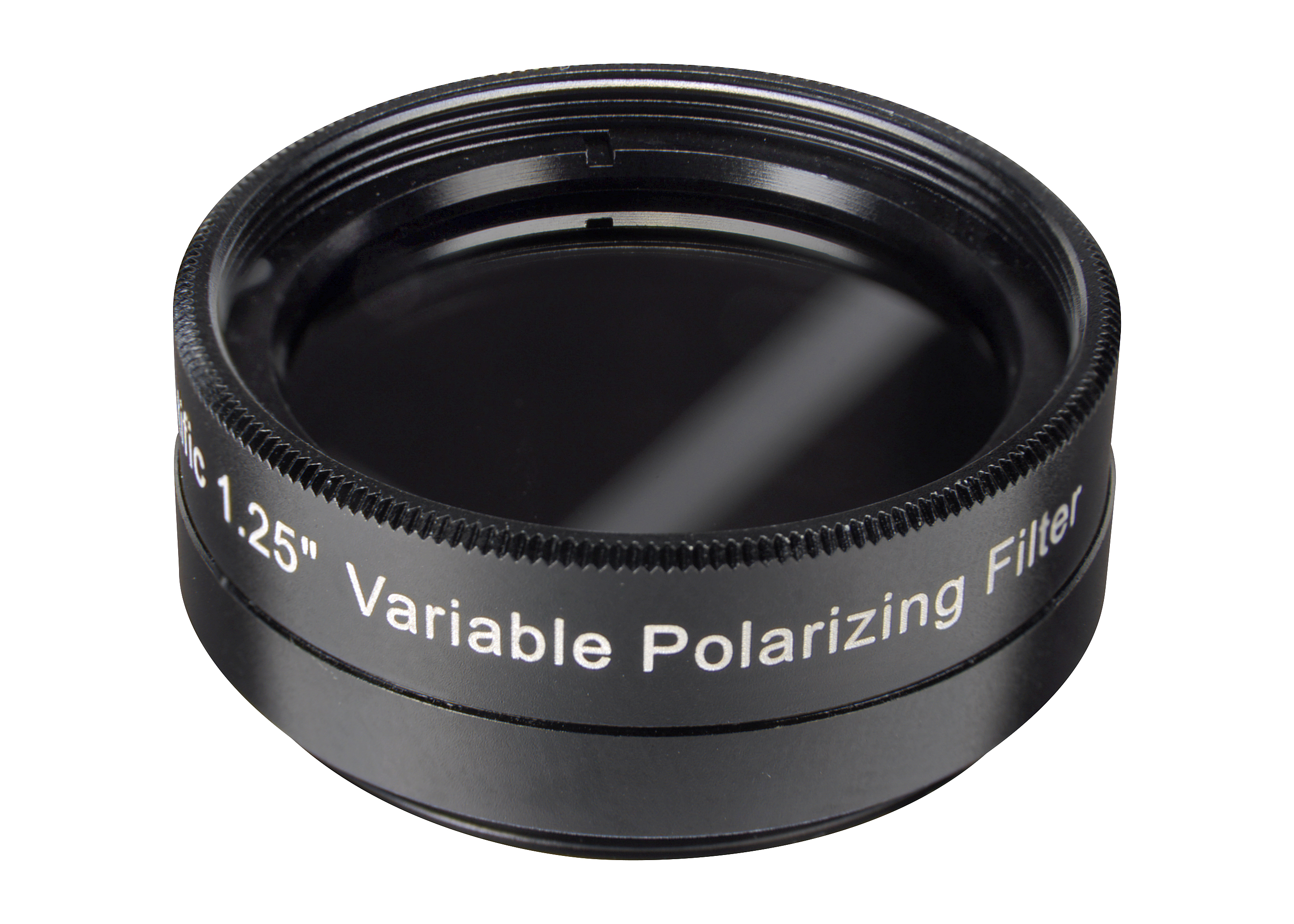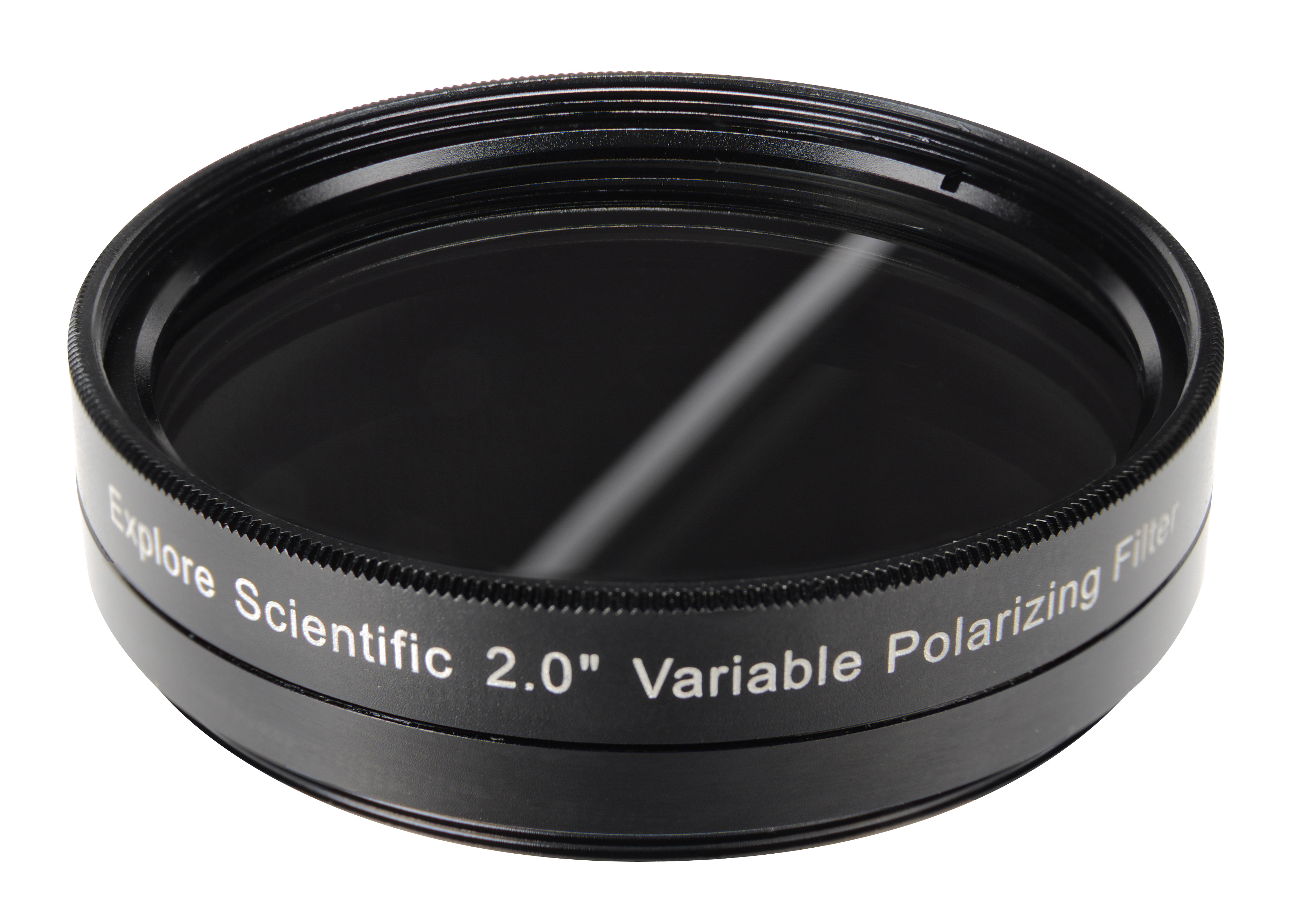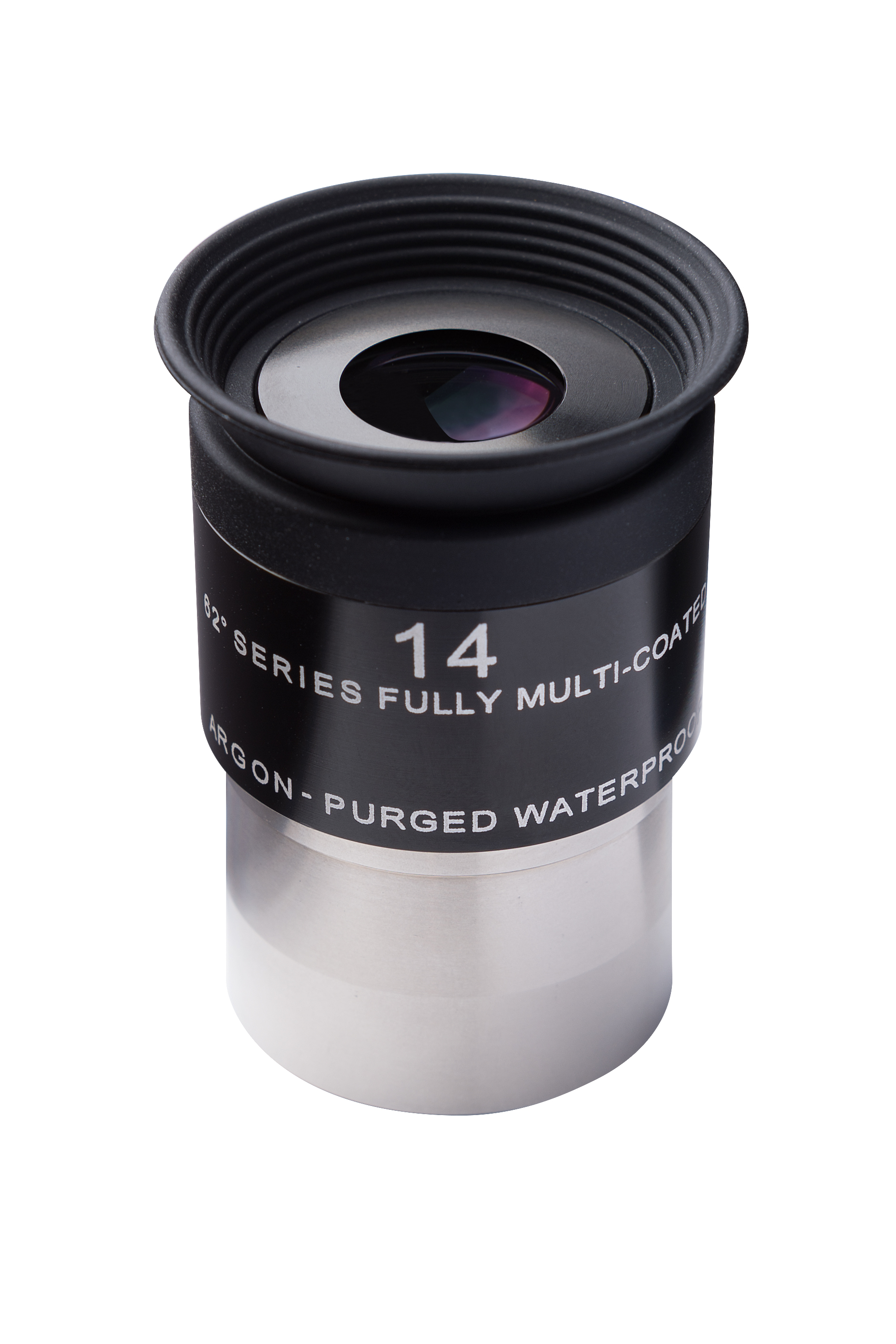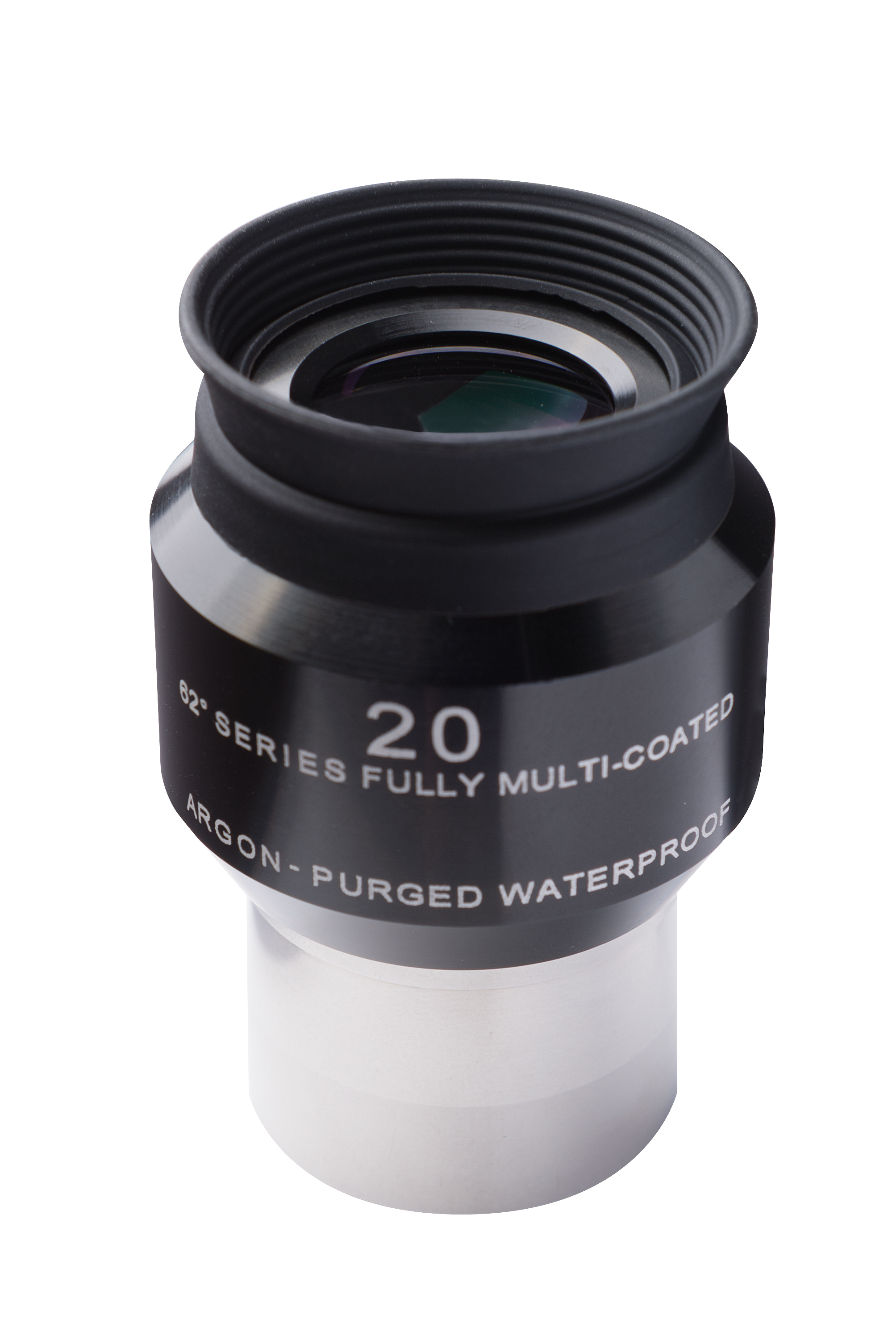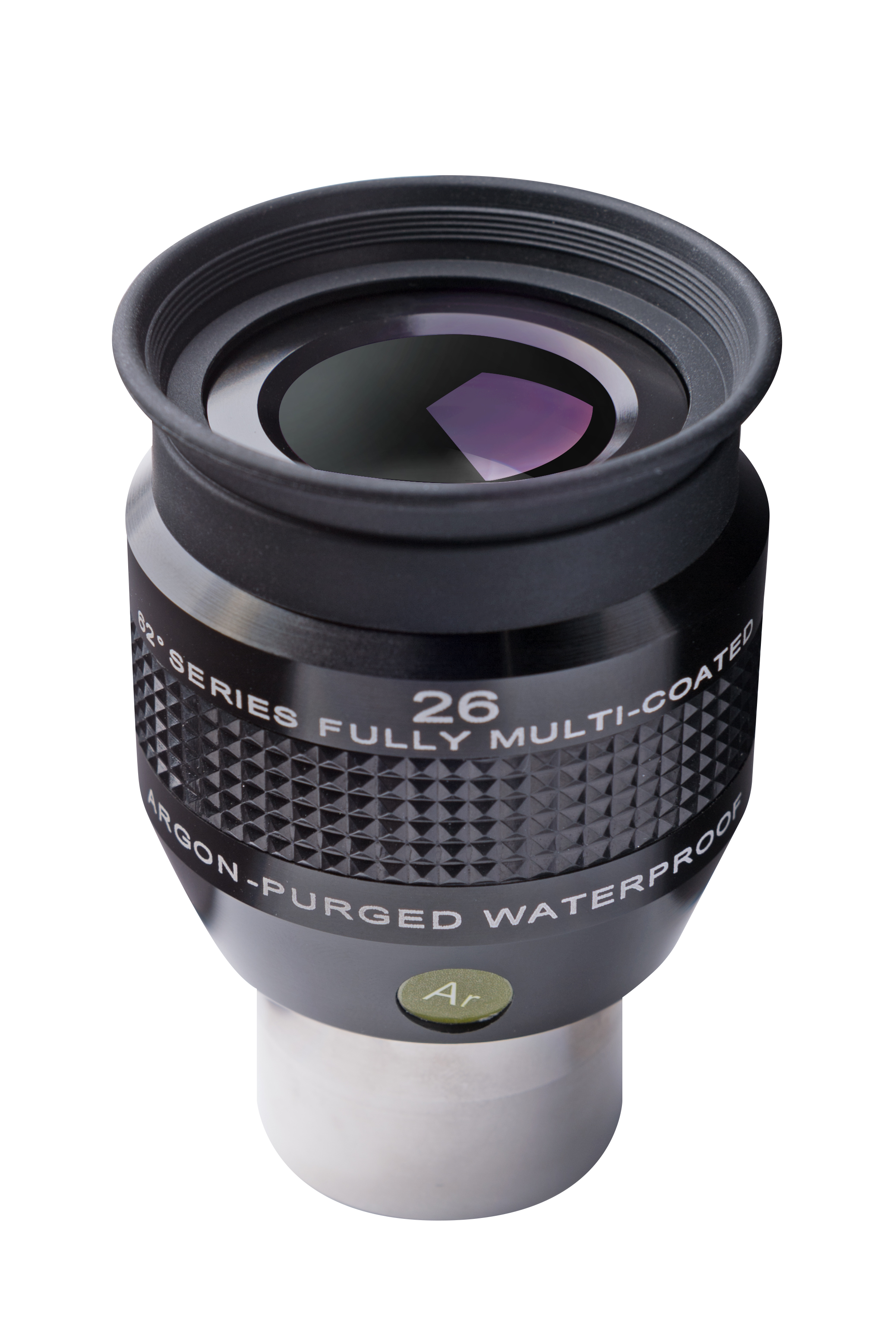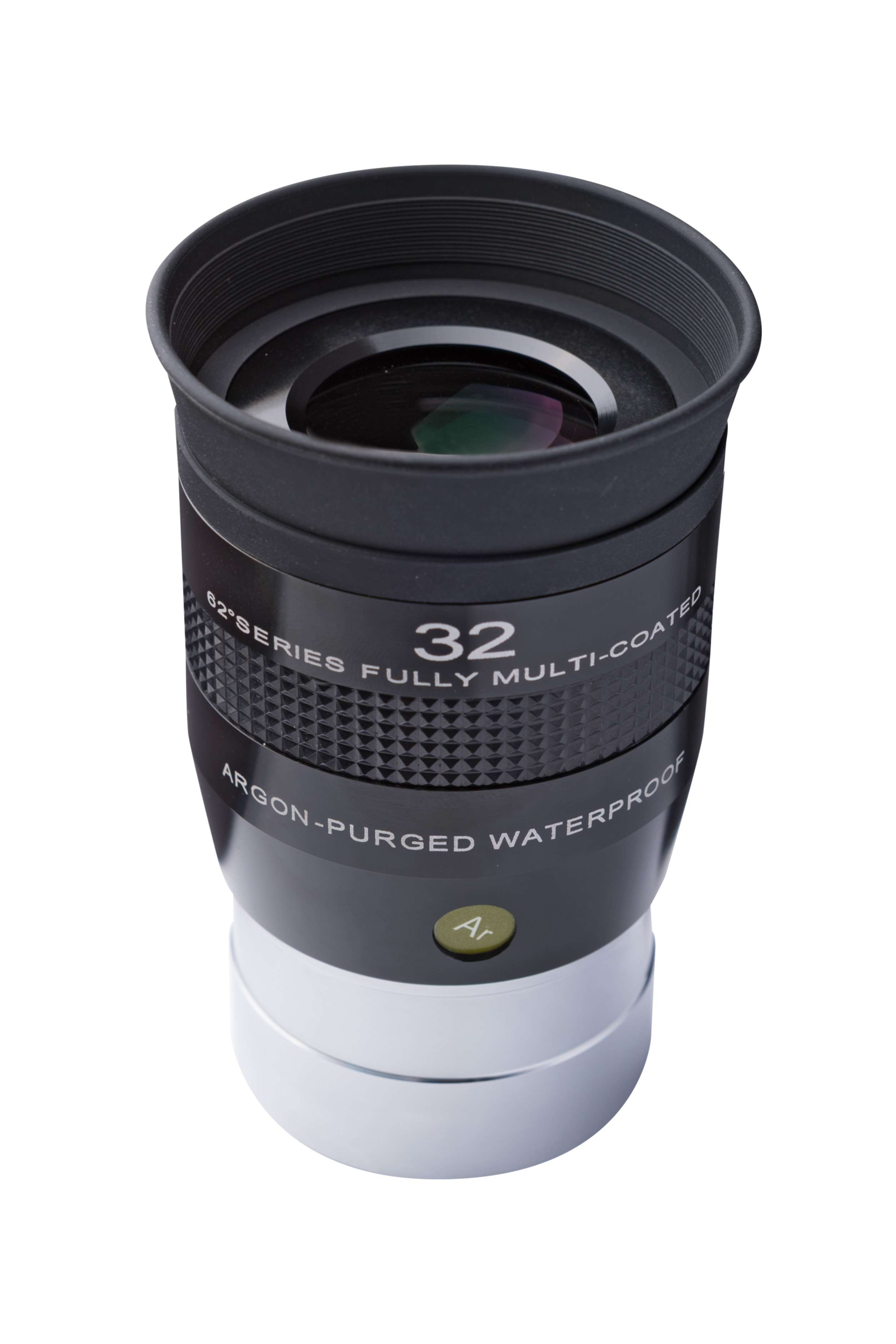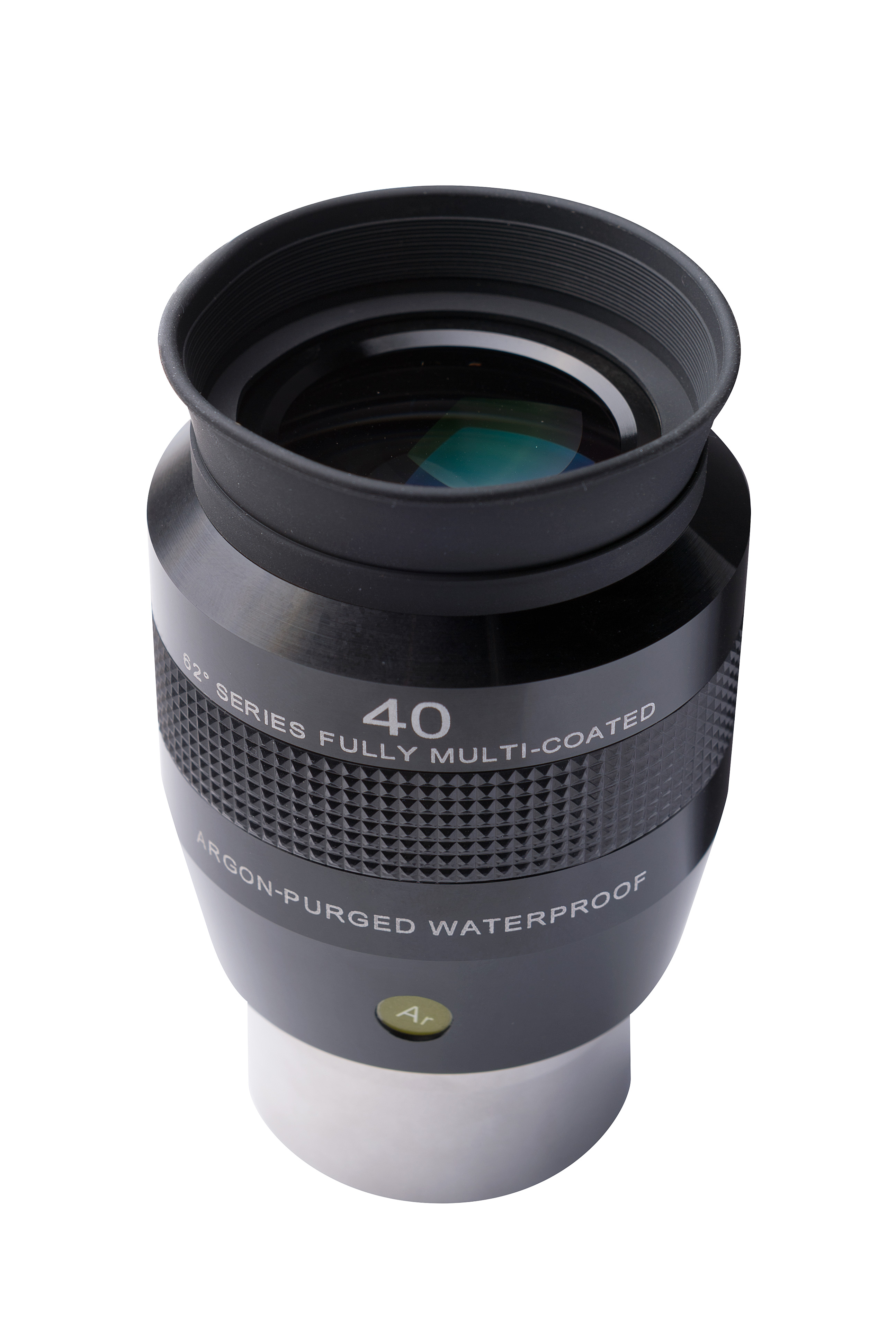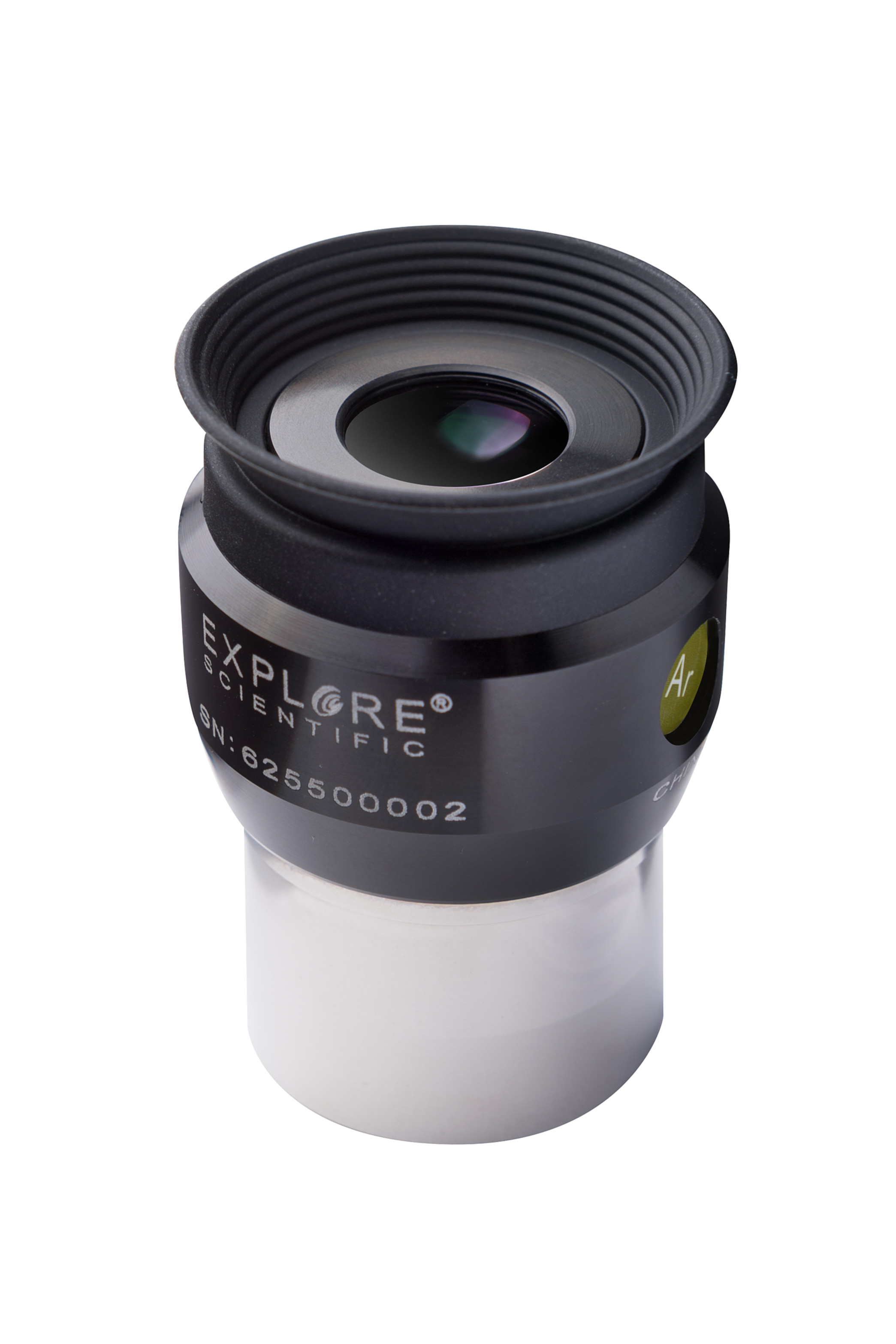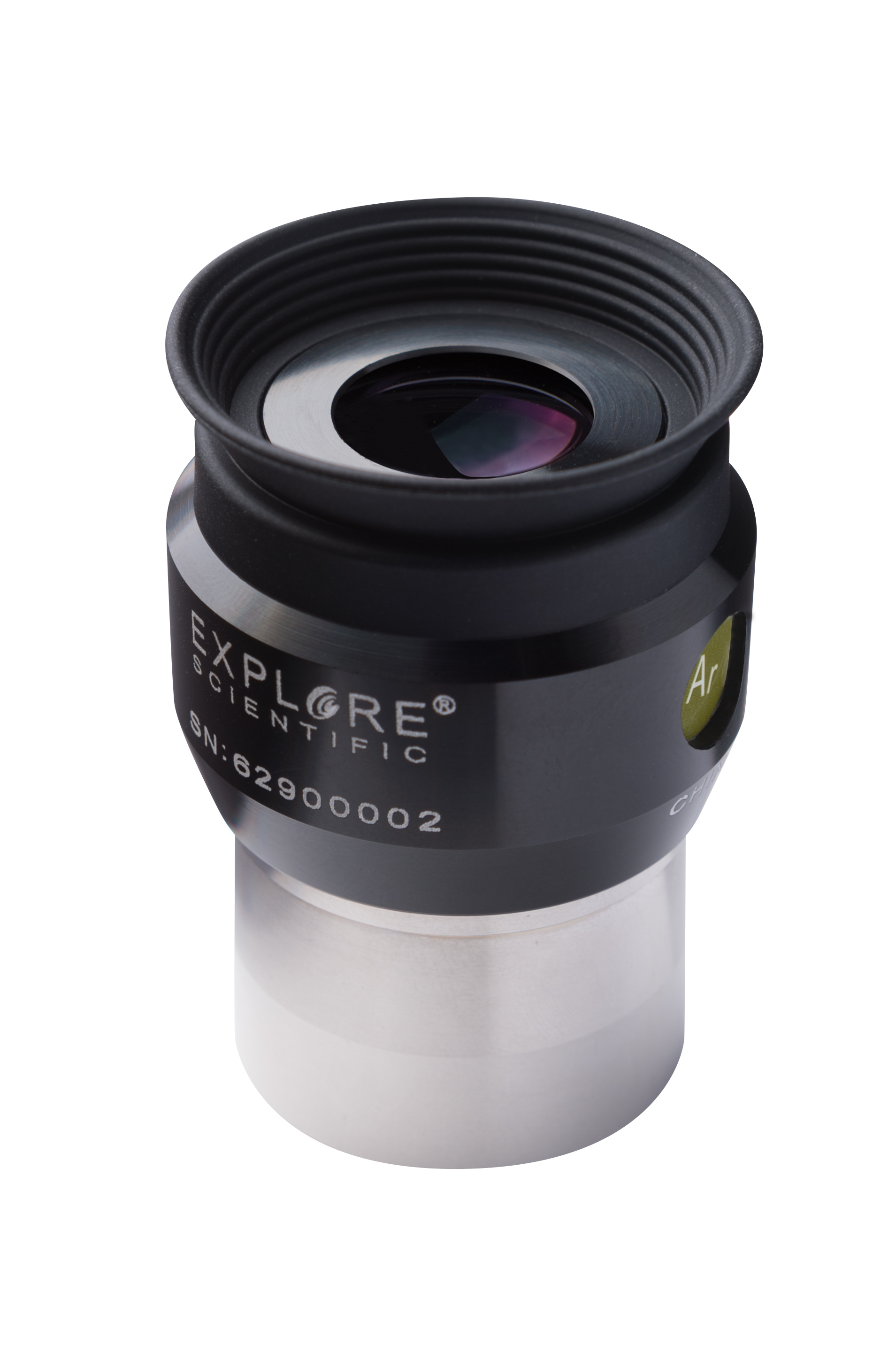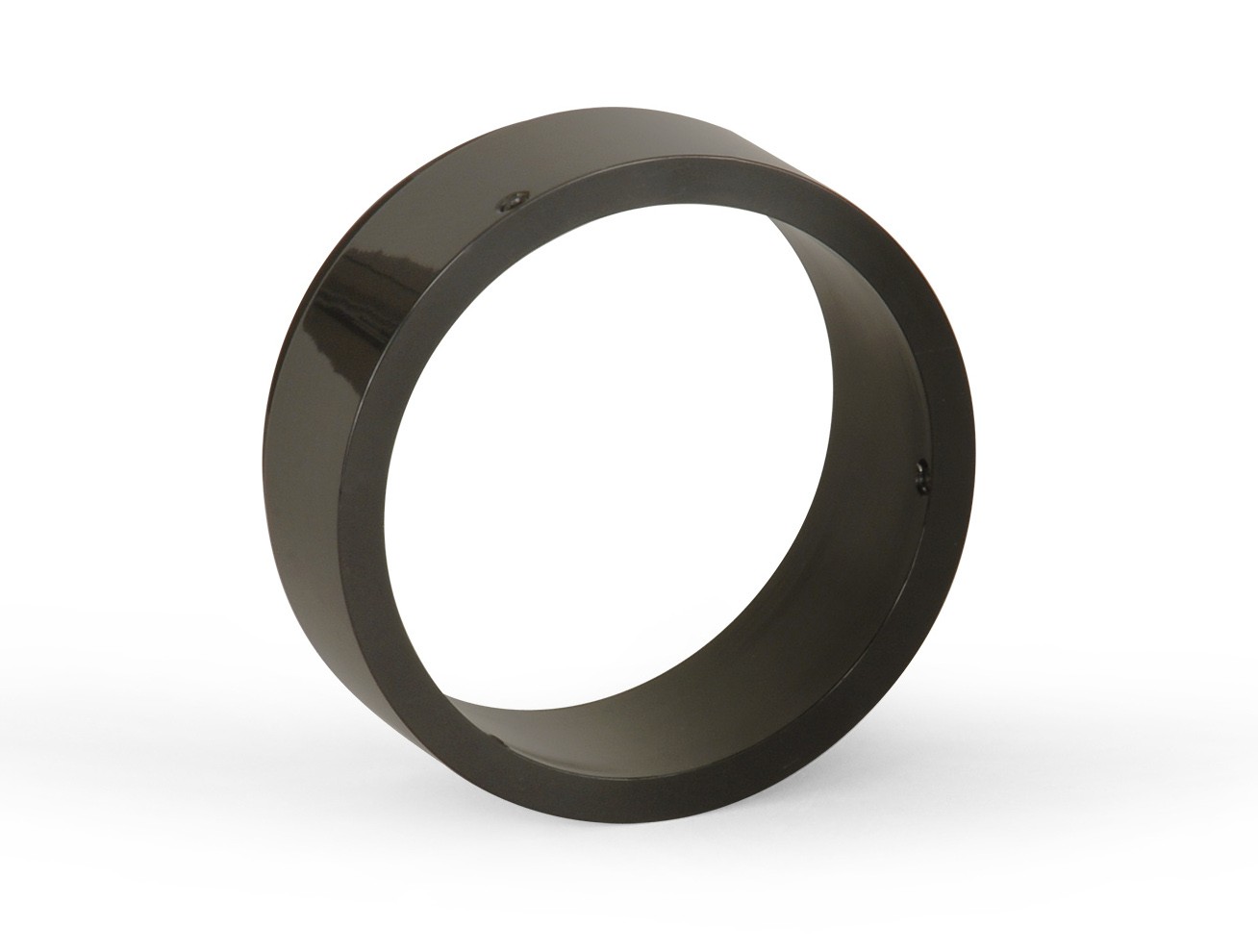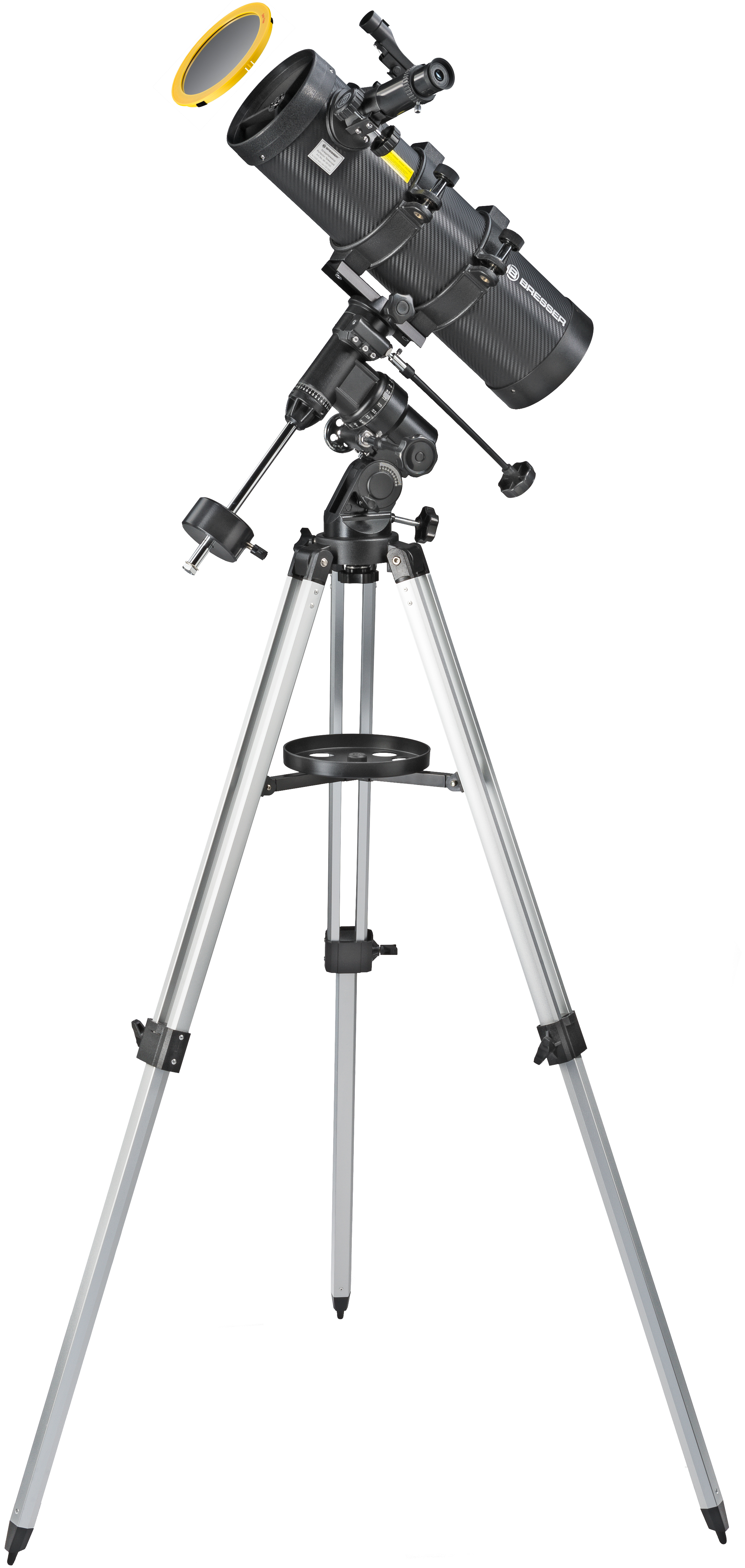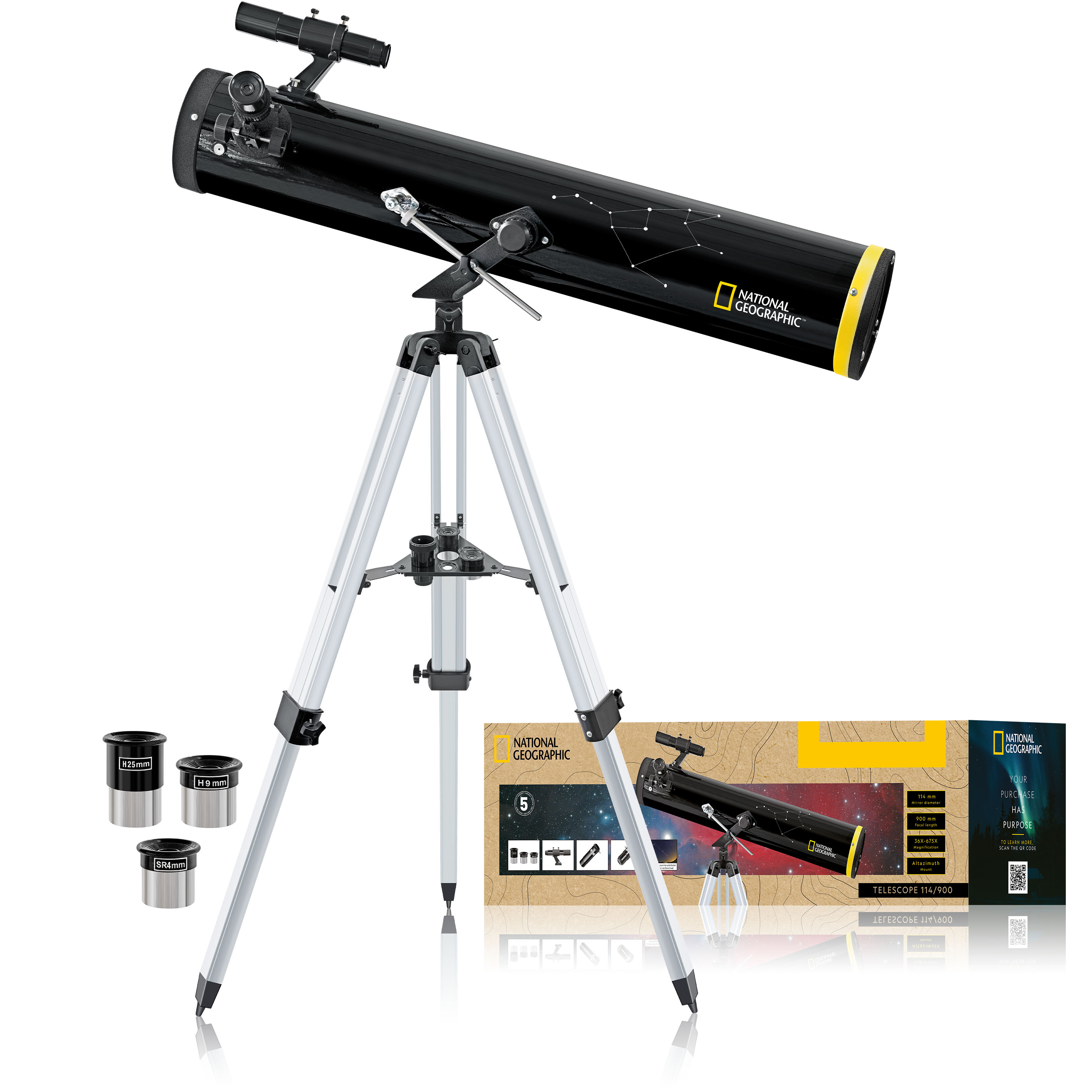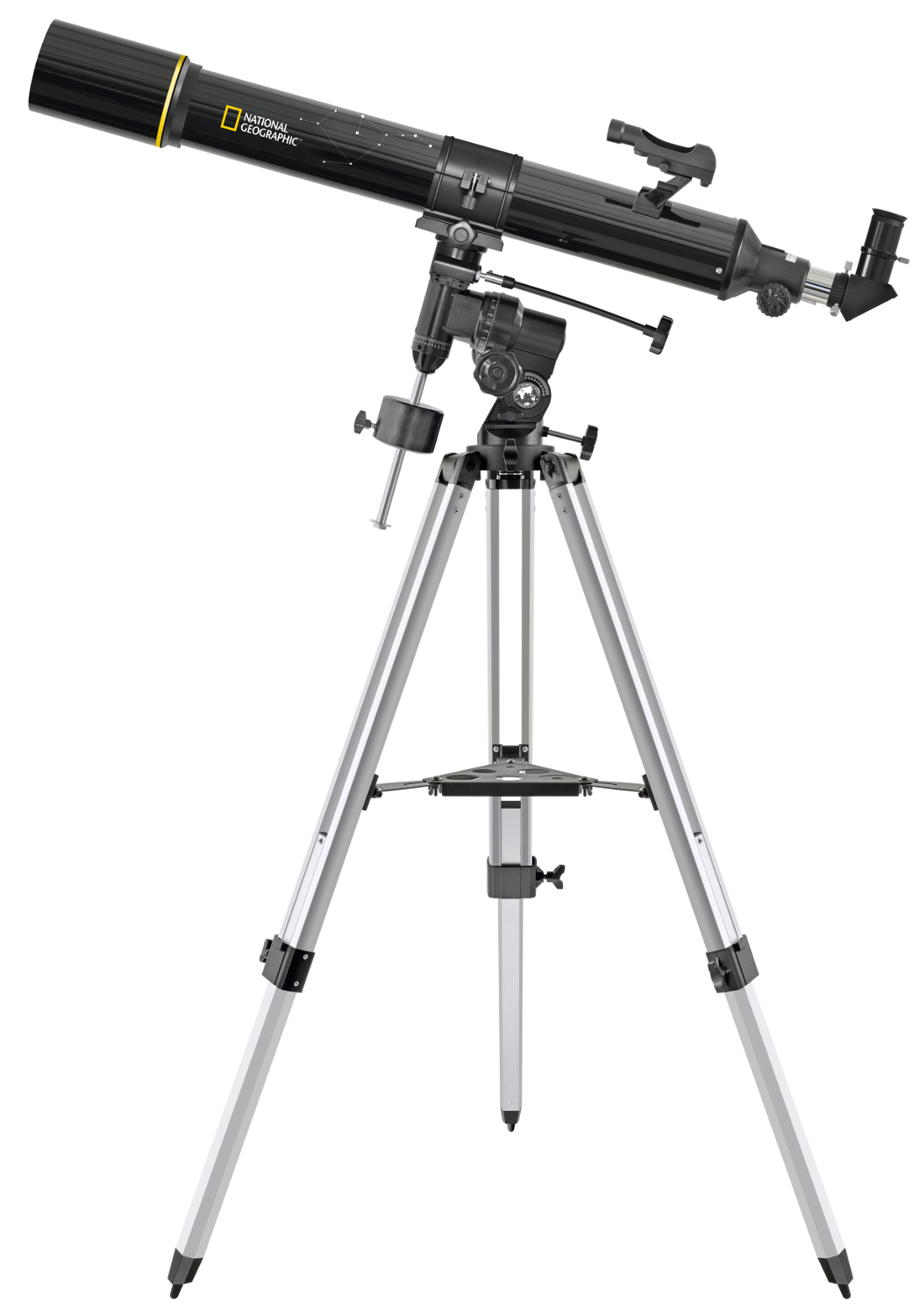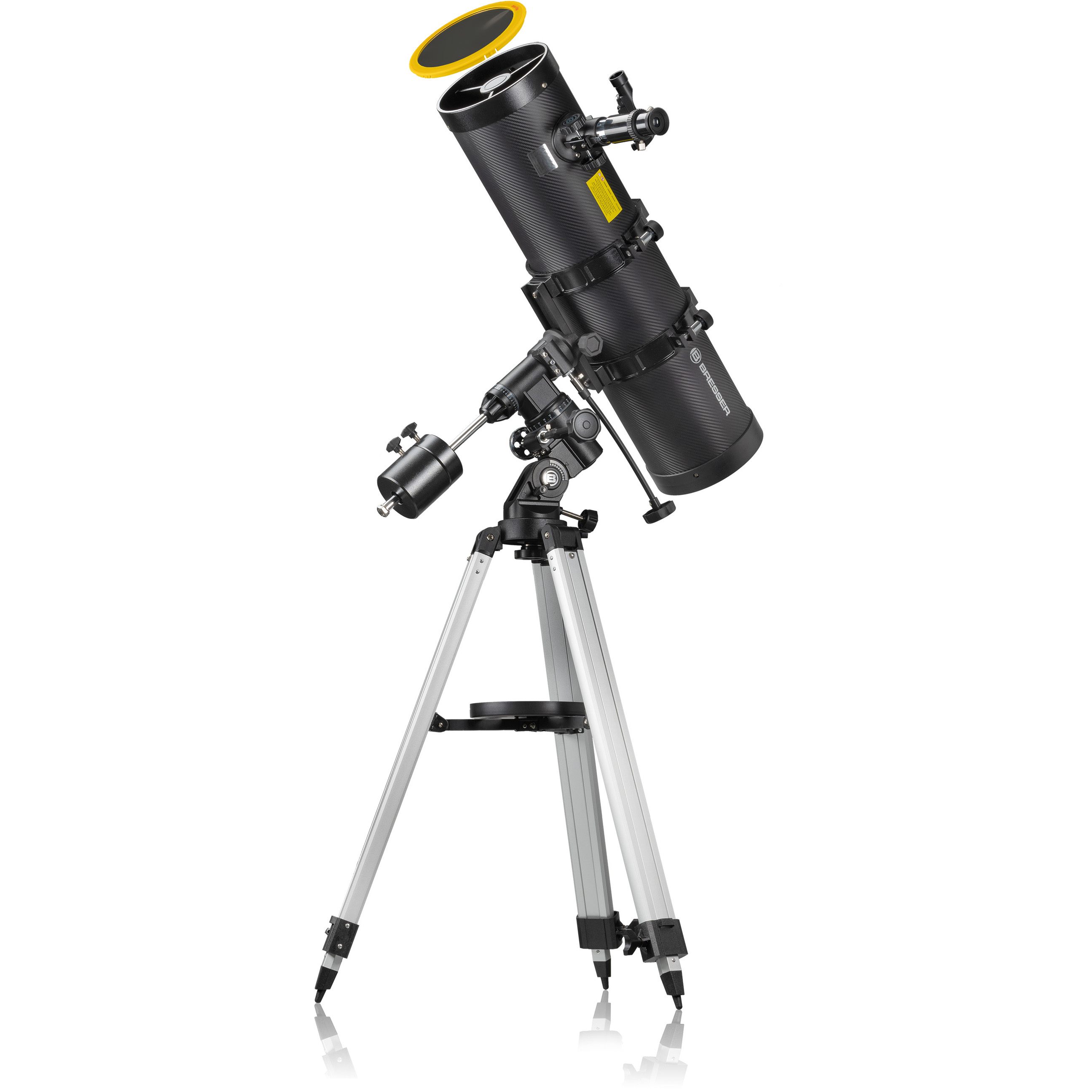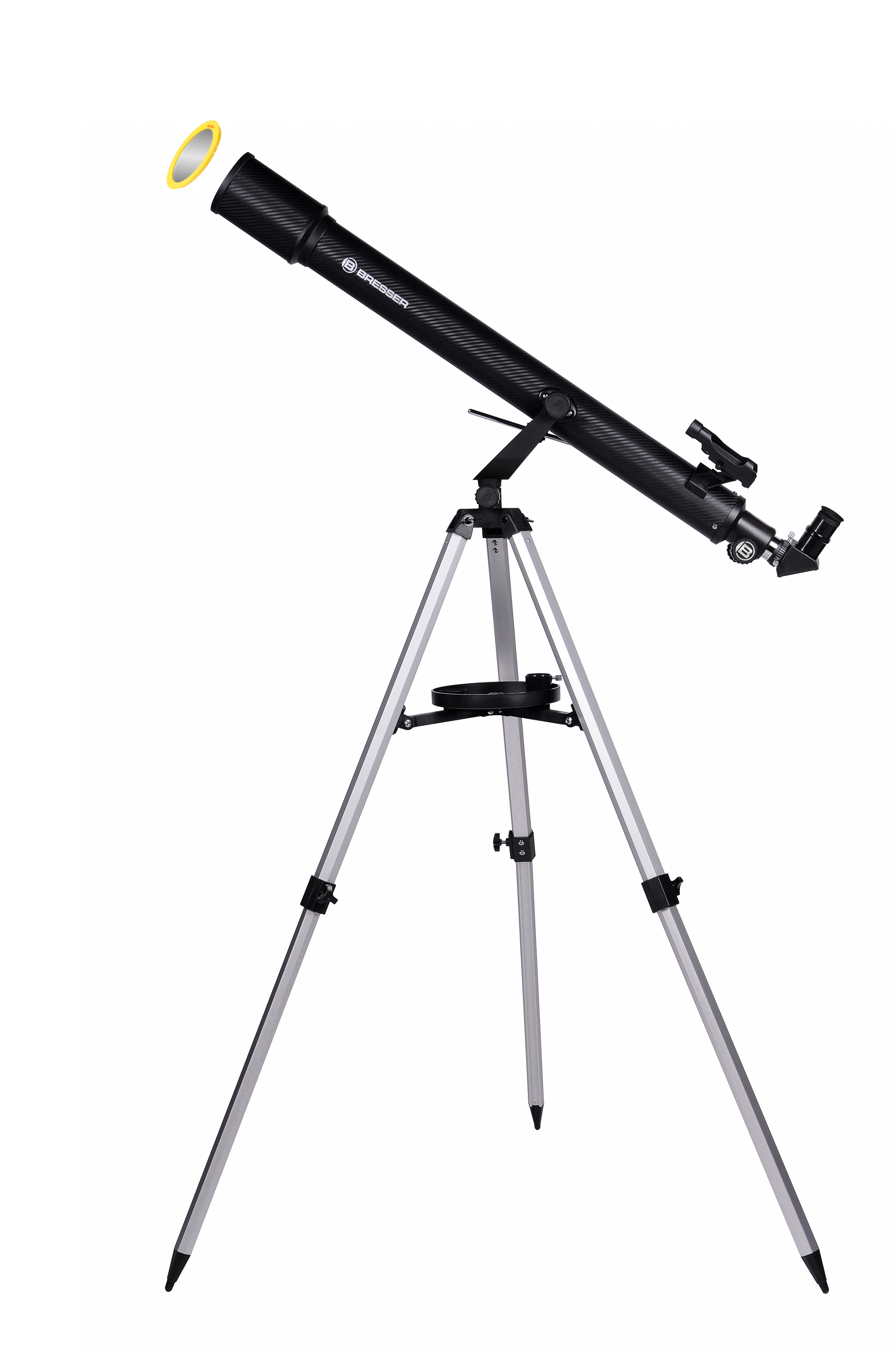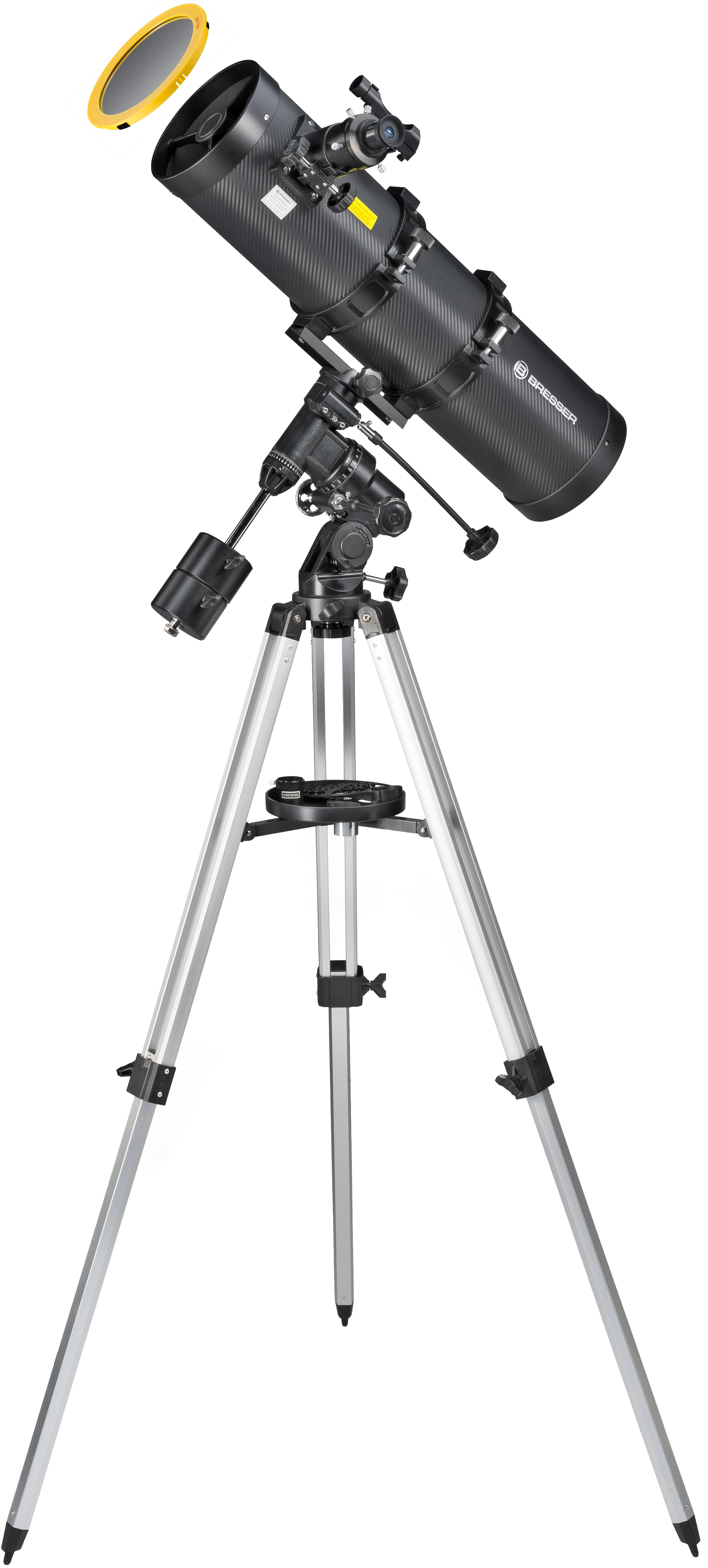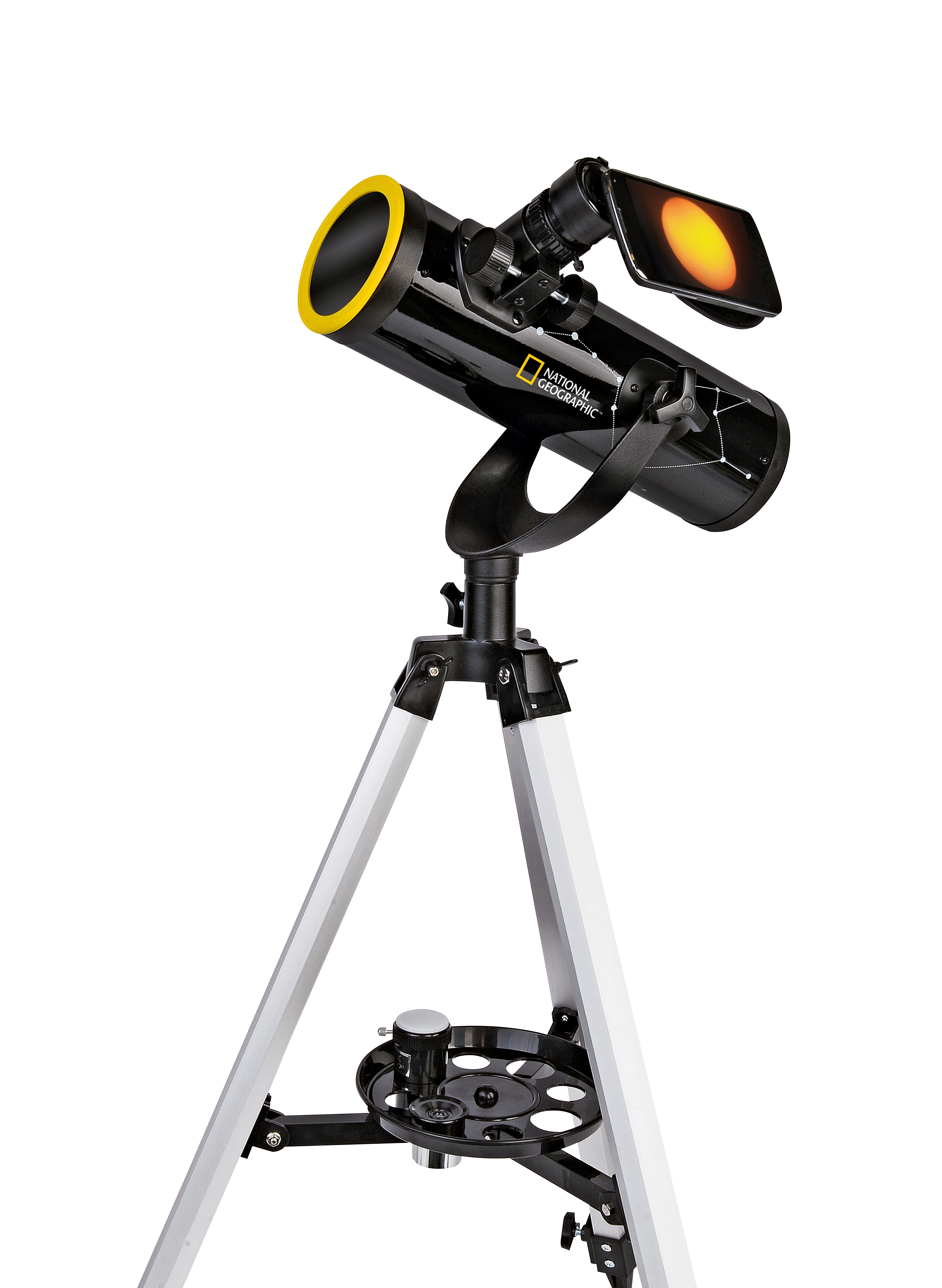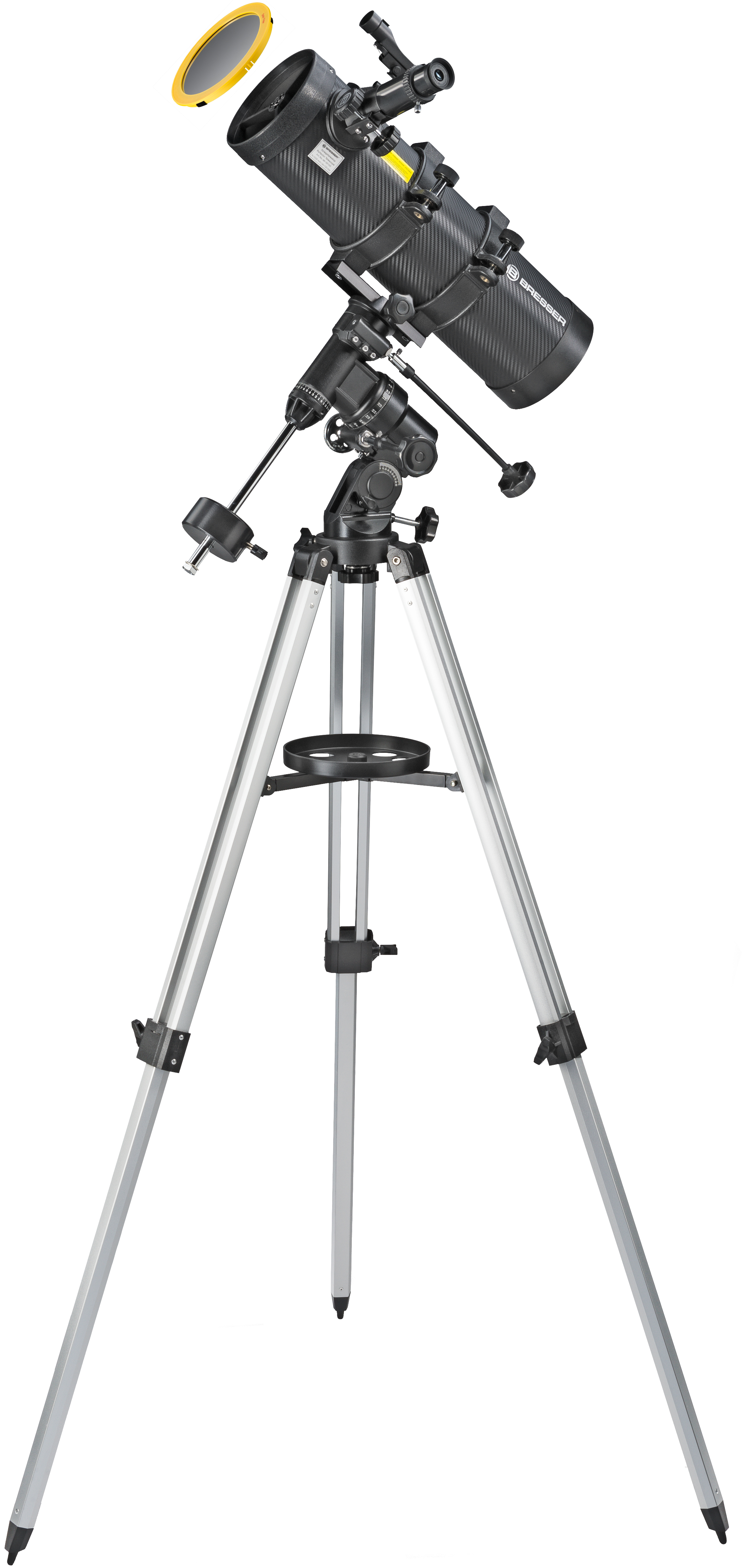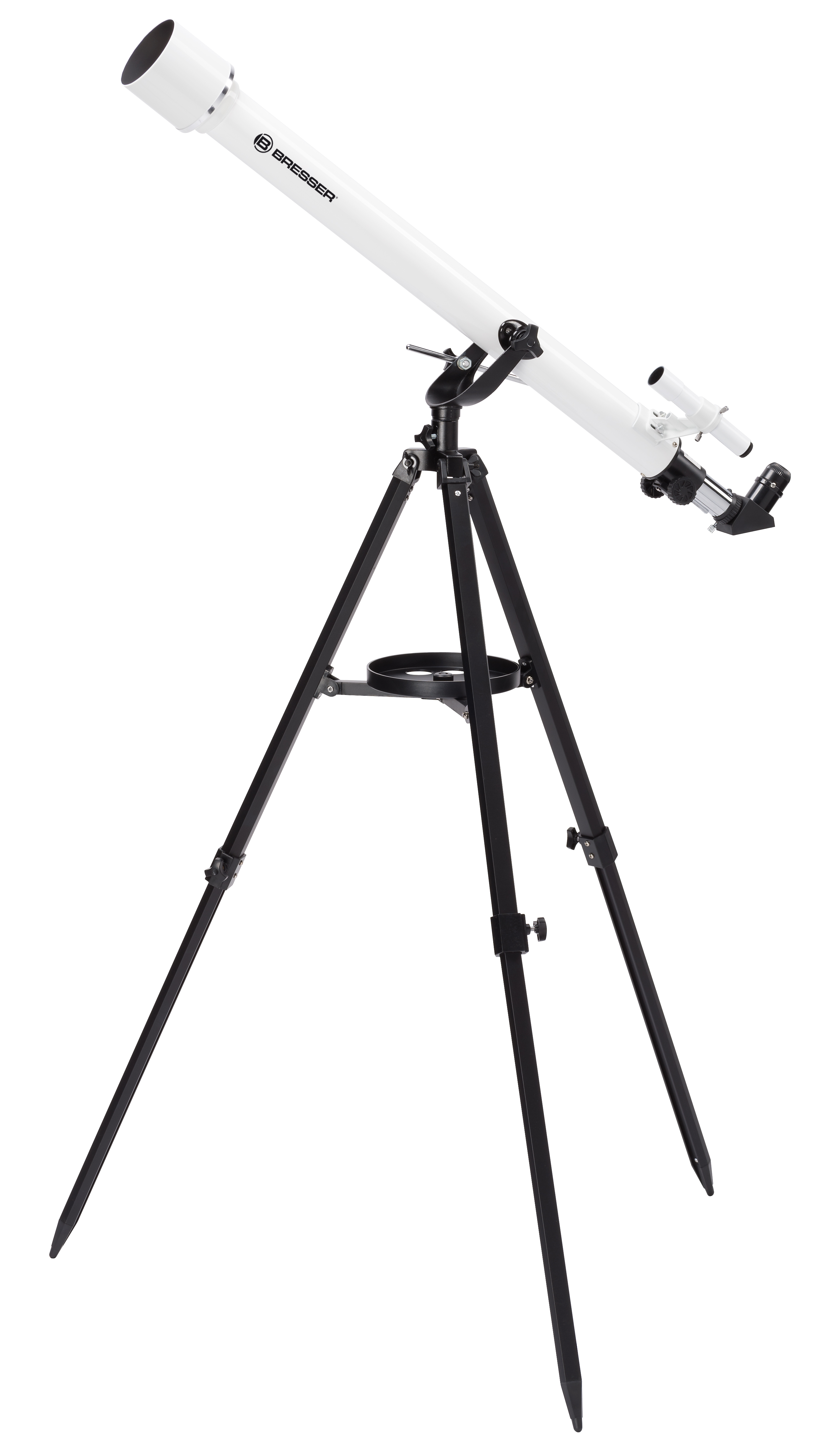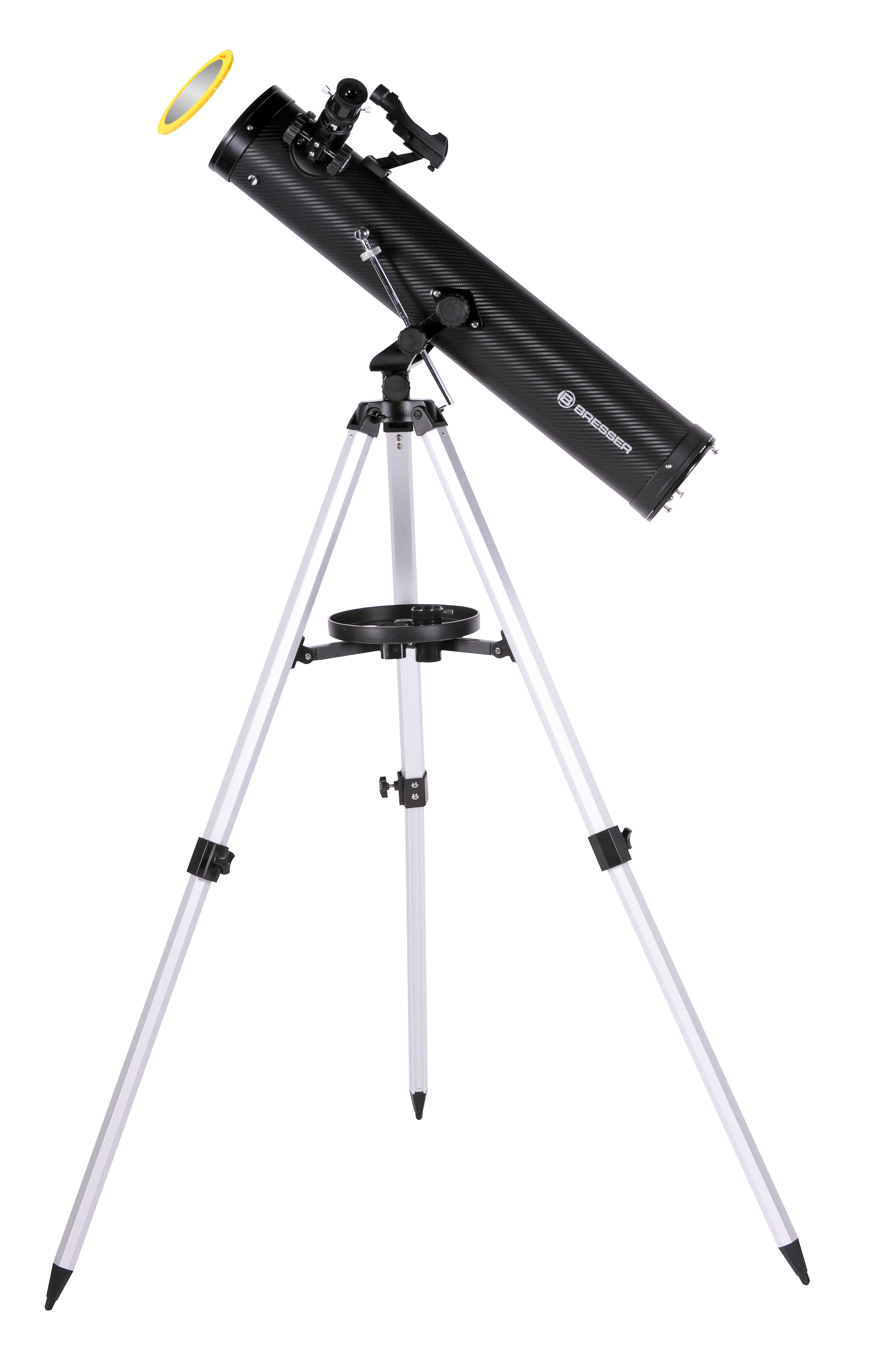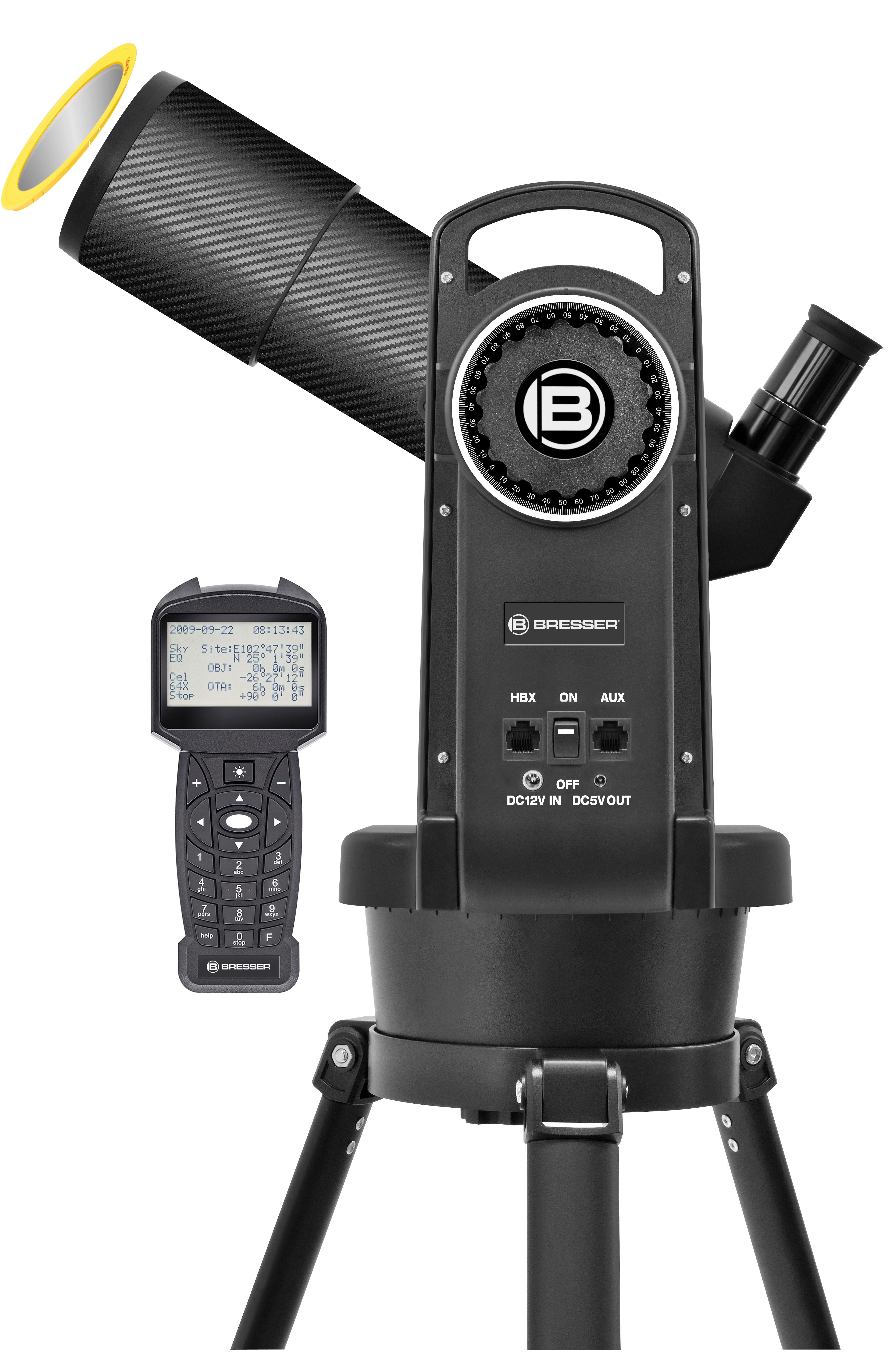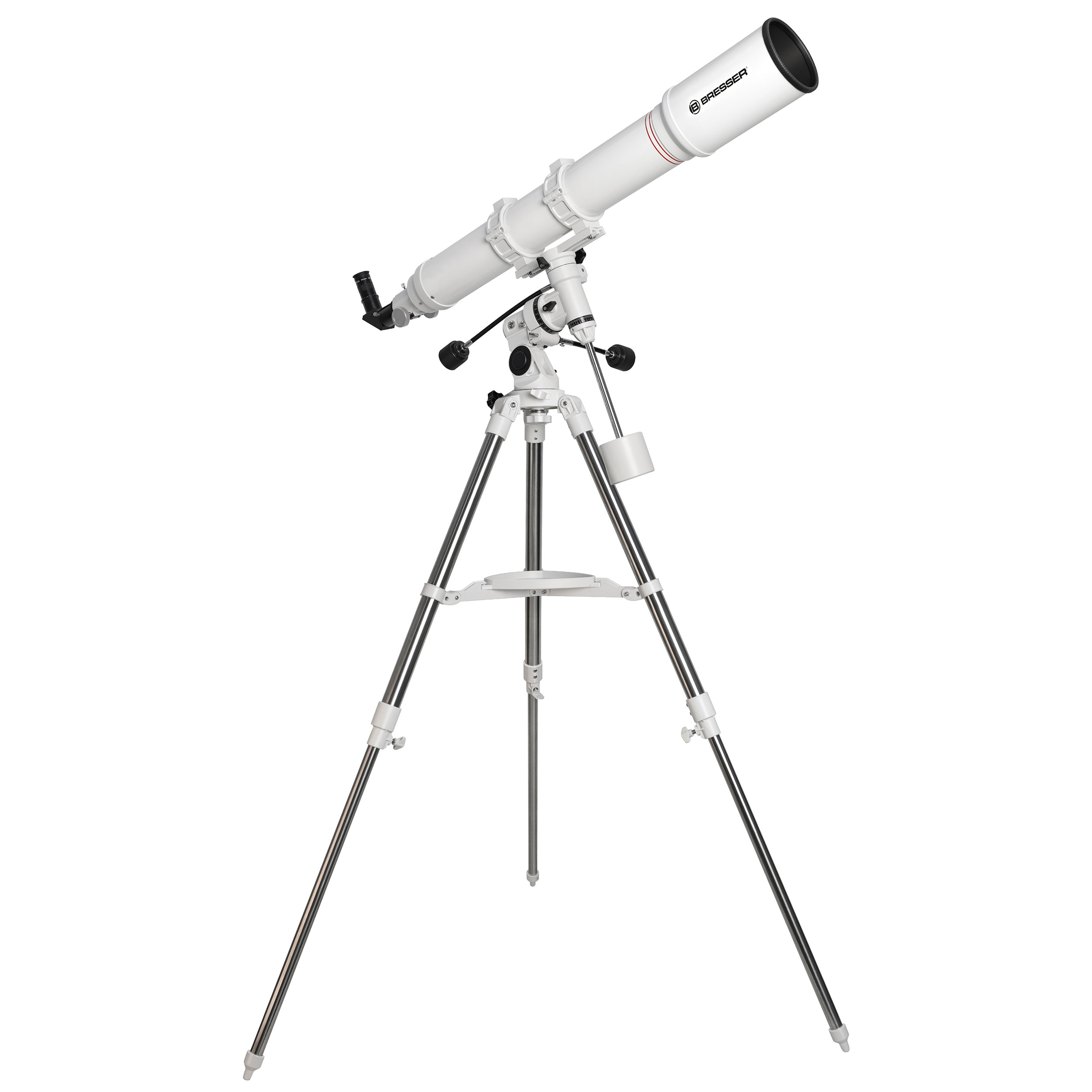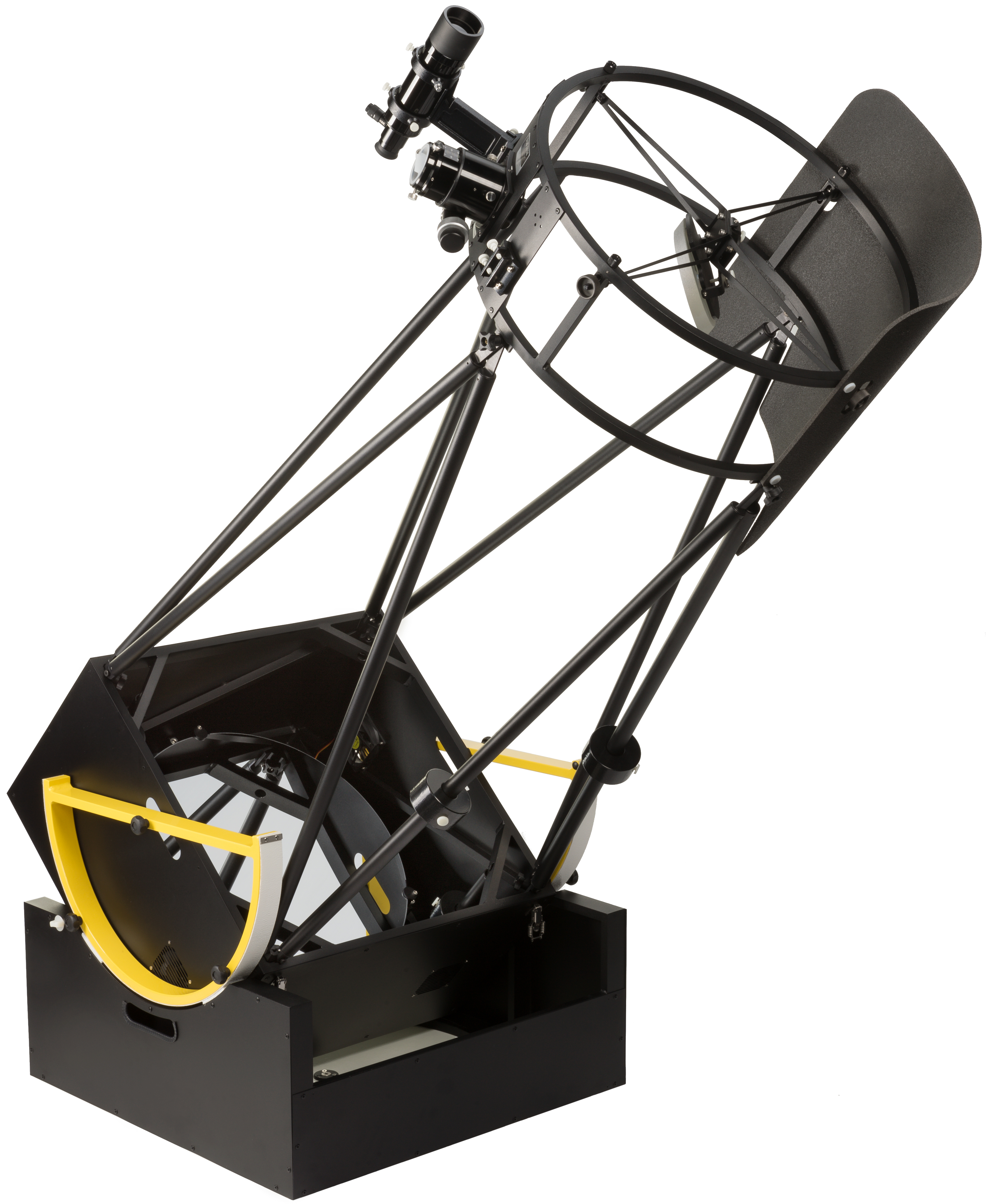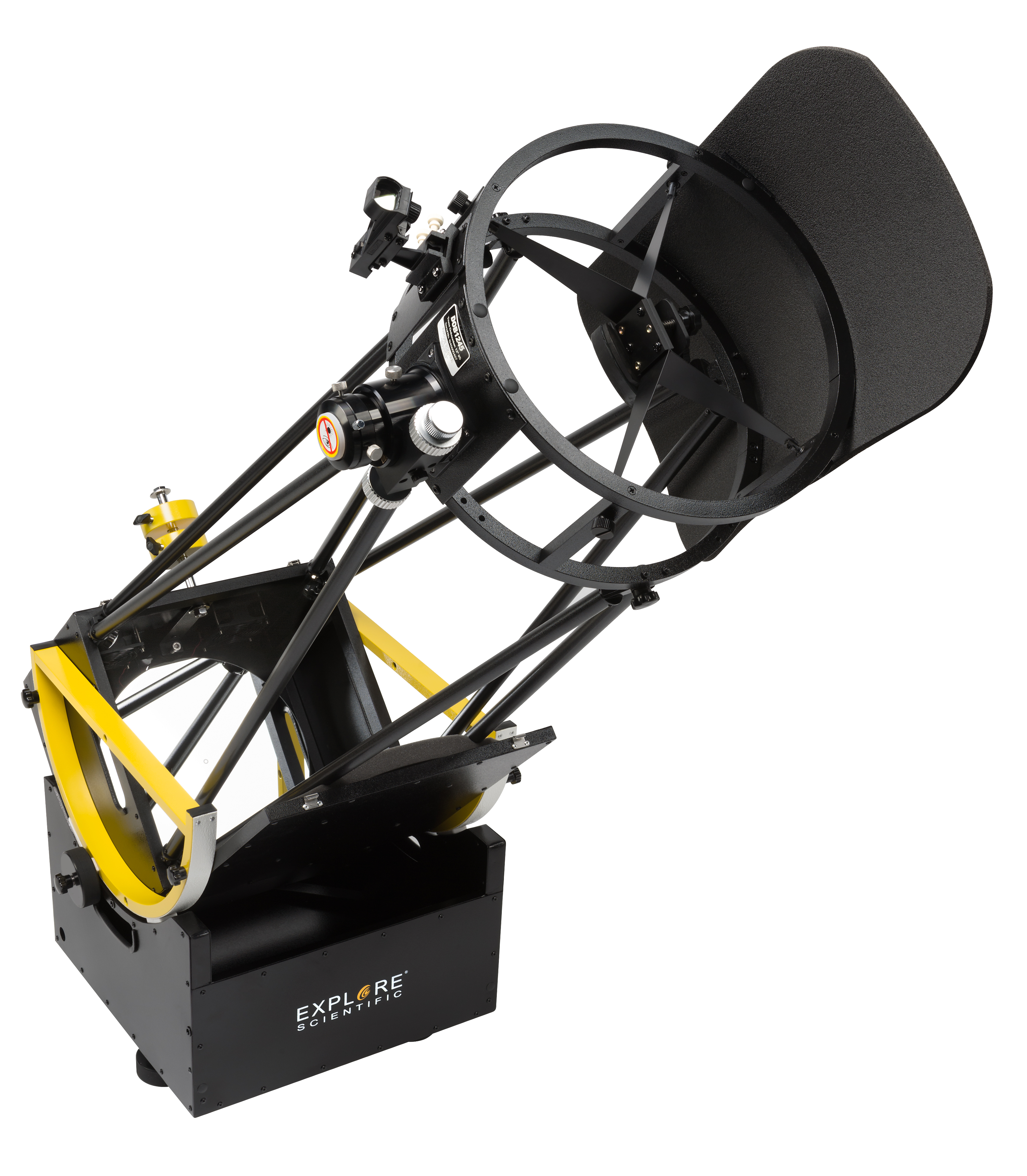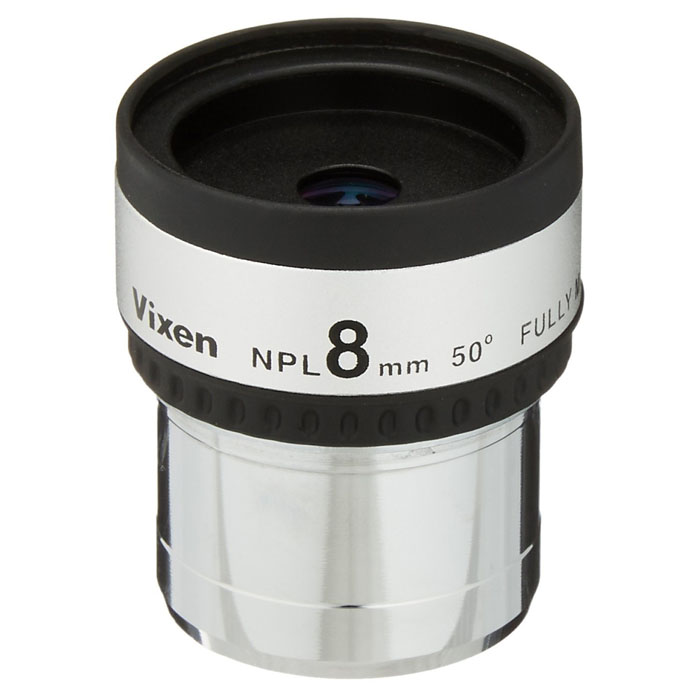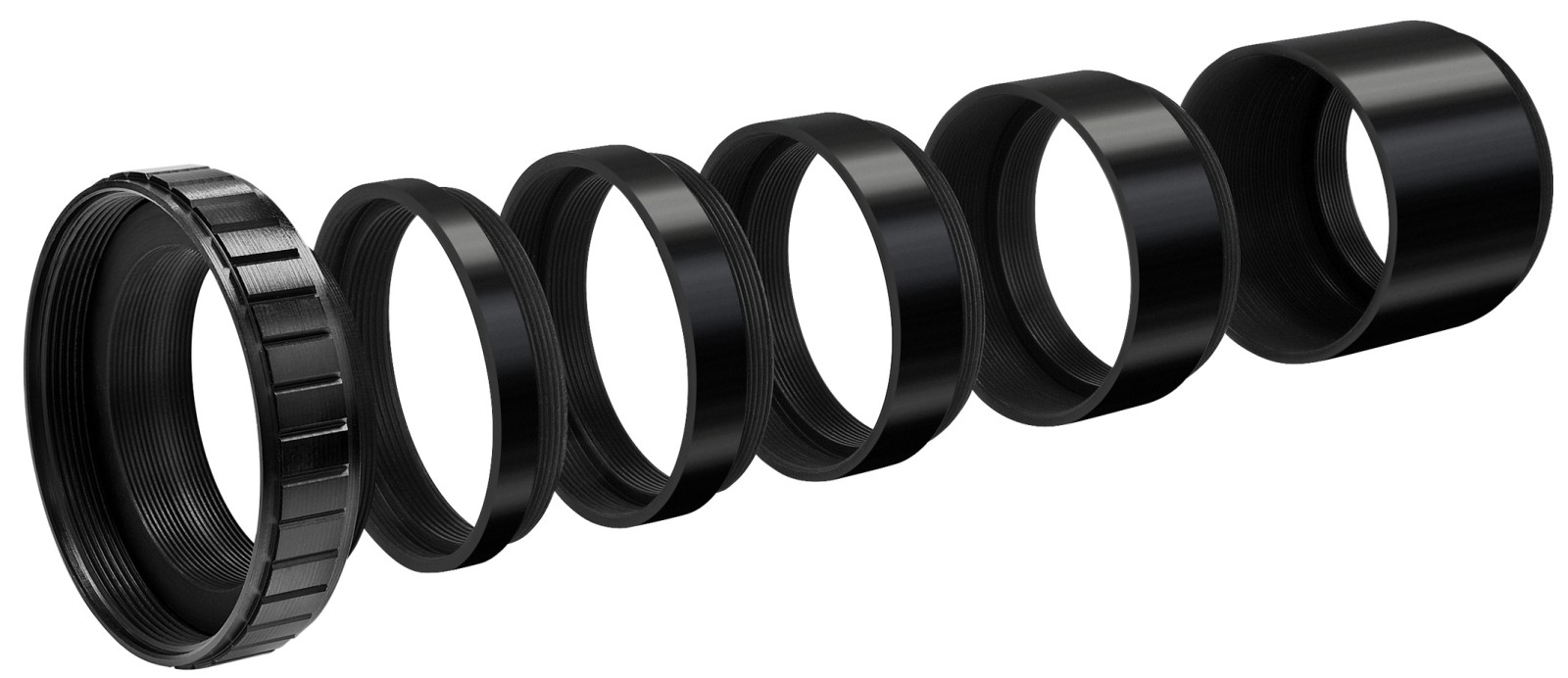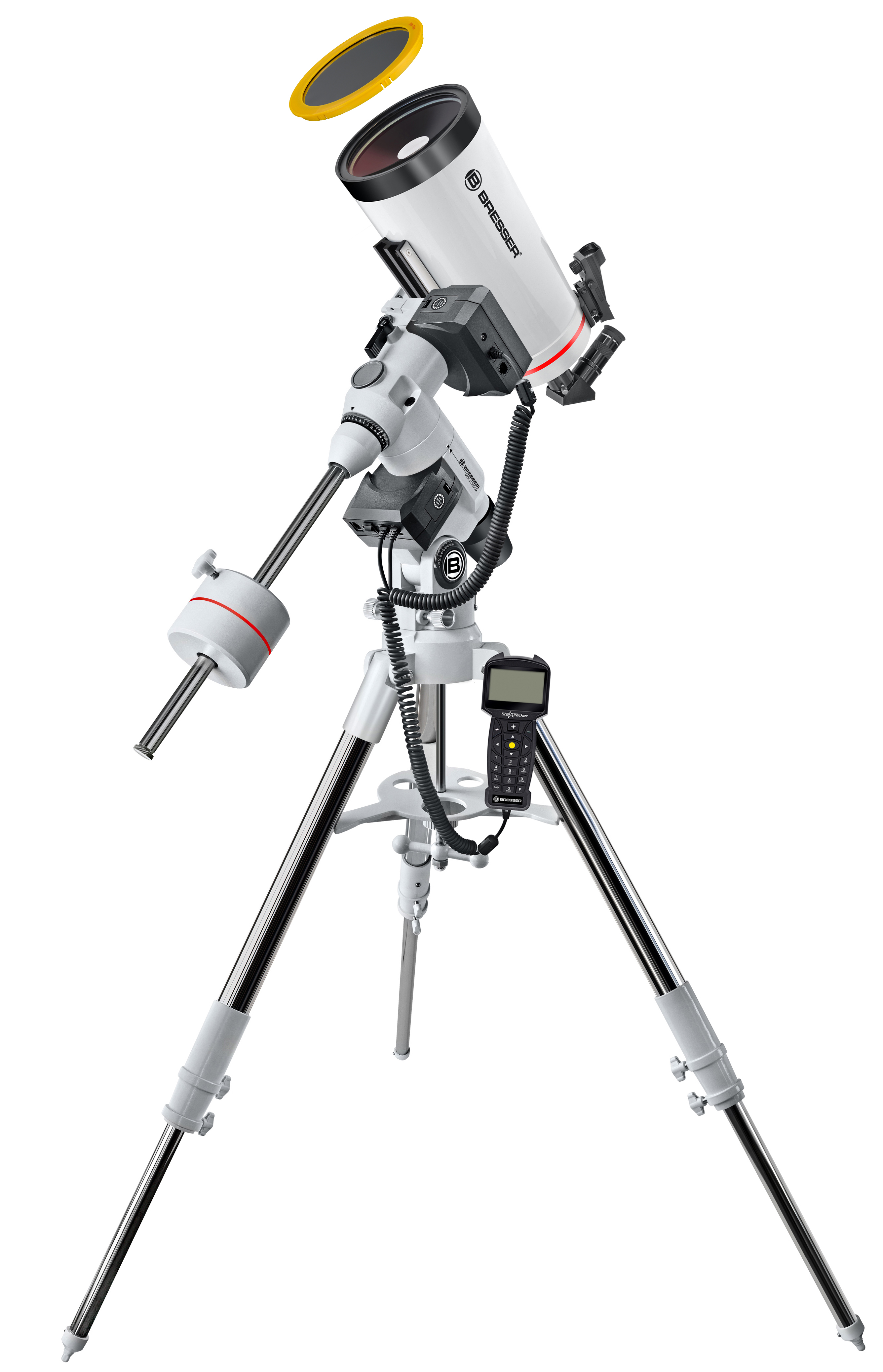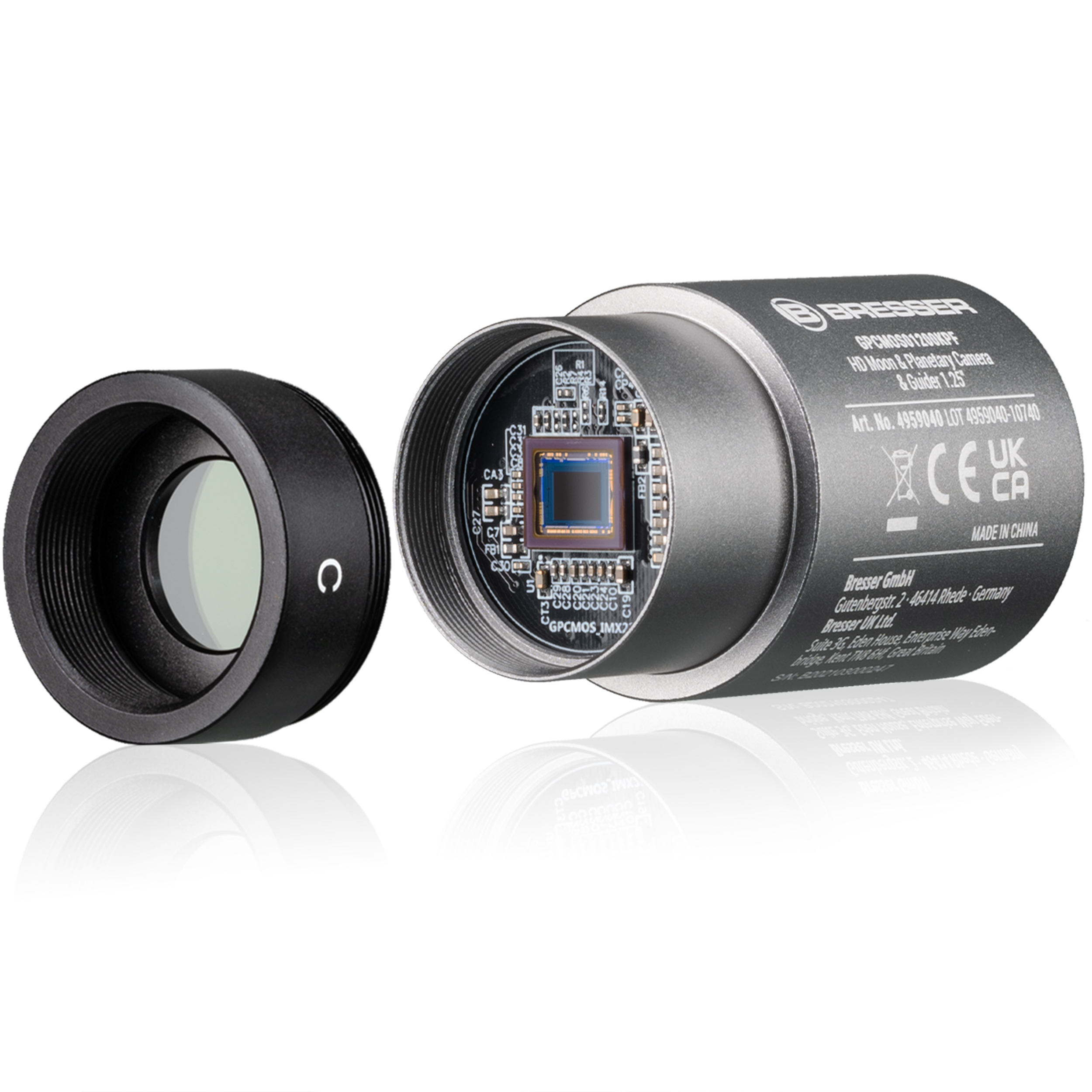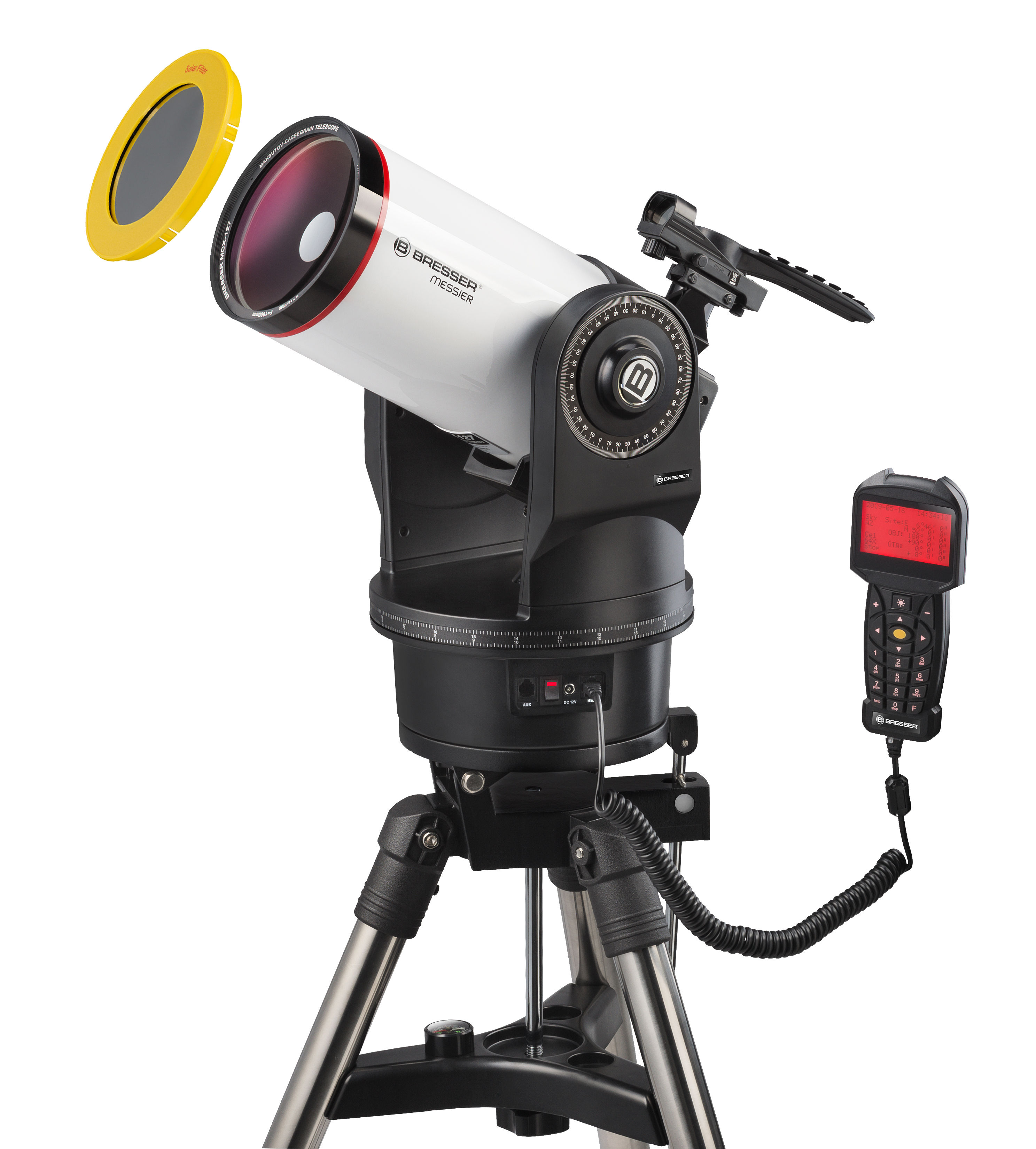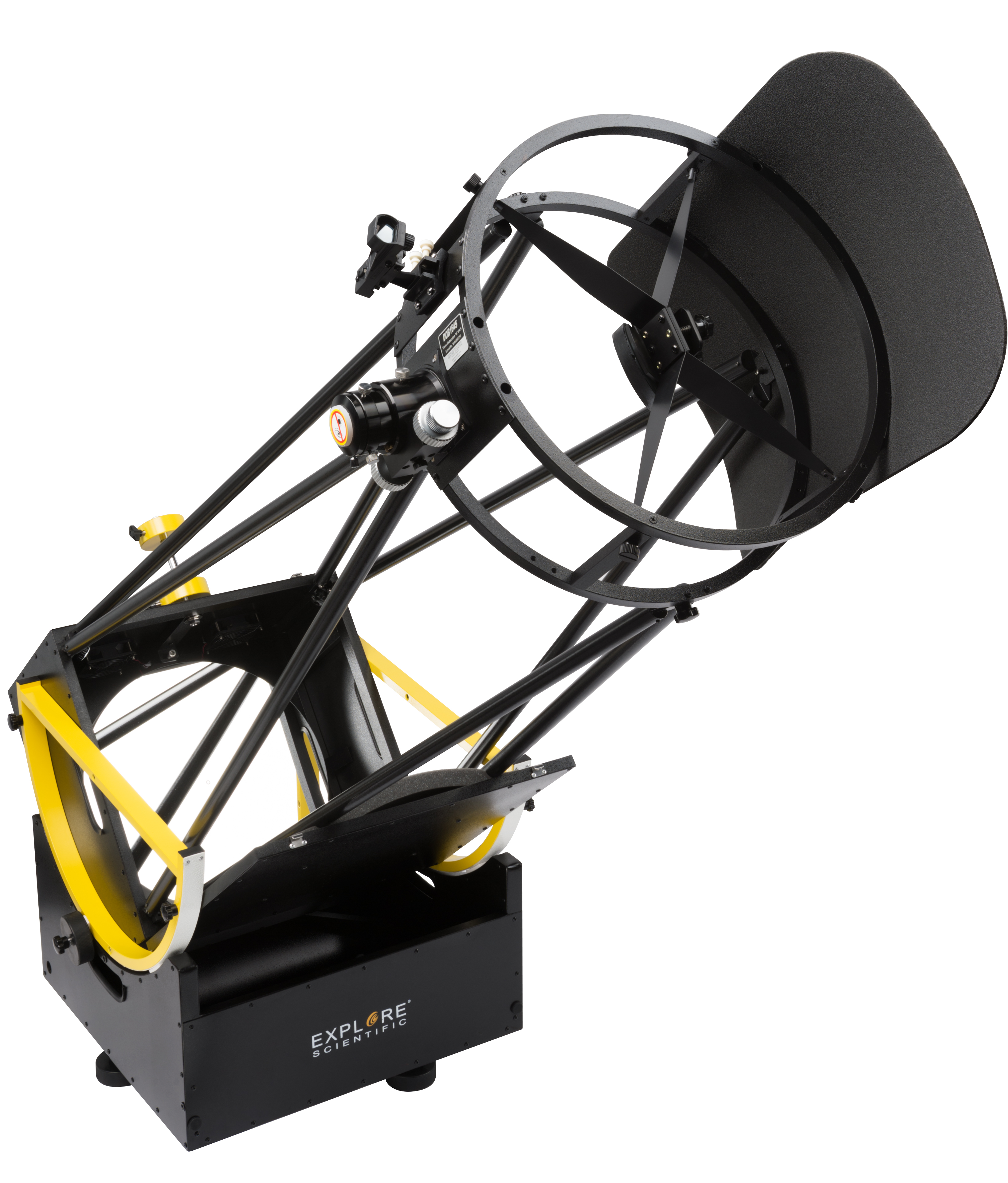



































Product Highlights
Modern 406mm truss-dobsonian telescope in full aluminium construction
- Modern secondary mechanics - the collimation is easily achieved without tools and keeps collimation well during transports
- Modern primary mirror cell - the telescope mirror can be collimated from the front while looking through the eyepiece and is supported by a modern floatation system with radial roller bearings
- Large powder coated altitude wheels provide smooth and precise movement even at high magnifications
- Secondary unit and altitude wheels fit into the rocker box and the mirror box includes a cover for transport so that the whole telescope breaks down into only two aluminium cases and the trusses
- Extremely high rigidity construction
- Dew-resistant because of aluminium construction: no deforming press board due to the exclusive use of metals
- Lightweight: the aluminium profile/aluminium plate construction reduces the weight to about half of the mass of most press board designs of this price range
- Two large radial fans for fast thermal equilibrium
- Scope of delivery: Telescope, Manual, Reducer 2"/1.25", Red dot finder, Stray light shield for secondary cage, Main mirror collimation tool, Battery compartment with bag for fans, Extension tube for focuser
Testbericht Sterne & Weltraum 856 K.pd
Die mobile Fahrradsternwarte
Was erhält man, wenn man ein Fahrrad, einen Fahrradanhänger und ein Explore Scientific ultraleicht Dobson-Teleskop zusammenbringt? Eine mobile Fahrradsternwarte mit der man schnell seinen Beobachtungsort in den umliegenden Feldern erreicht.
Einen ausführlichen Bericht finden Sie hier: Astronomieschule.de
With BRESSER, you can enjoy a smooth introduction to the vast world of astronomy. Our detailed information ("Telescope Guide") provides valuable tips for beginners— but even experienced astronomers can use the information we provide (e.g., tables for the geographical latitude of all major world cities) as a reference.
Here is the table of contents of the comprehensive BRESSER Telescope Guide:
With BRESSER, you can enjoy a smooth introduction to the vast world of astronomy. Our detailed information ("Telescope Guide") provides valuable tips for beginners—but even experienced astronomers can use the information we provide (e.g., tables for the geographical latitude of all major world cities) as a reference.
Here is the table of contents of the comprehensive BRESSER Telescope Guide:
- 2. The View into the Starry Sky
- 2.1 Observing with the Naked Eye
- 2.1.1 Observing Constellations with the Naked Eye
- 2.2 Observing with Binoculars
- 2.2.1 Observing Planets and Moons with Binoculars
- 2.2.2 Observing Deep Sky Objects with Binoculars
- 2.2.3 Every Beginning is Easy
- 2.3 Observing with a Telescope
- 2.4 The Moon
- 2.4.1 The Moon Phases
- 2.4.2 The Far Side of the Moon
- 2.4.3 The Moon Map
- 2.4.4 Maria (Seas)
- 2.4.5 Mare
- 2.4.6 Craters
- 2.4.7 The Ray Craters
- 2.5 Observing the Solar System with a Telescope
- 2.5.1 Where are the Planets?
- 2.5.2 Planet Observation
- 2.5.3 The Position of the Planets Relative to the Sun
- 2.5.4 The Planets Introduce Themselves
- 2.5.5 Deep Sky Observation with a Telescope
- 2.6 Practical Observation Tips and Tricks
- 2.6.2 Tips for Optimal Observation Conditions
- 2.7 The Most Beautiful Objects Throughout the Year
- 4. Telescopes
- 4.1 The Telescope as an Observation Instrument
- 4.2 Optics
- 4.2.1 Refractor (Lens Telescope)
- 4.2.2 Reflector (Mirror Telescope)
- 4.3 Mechanics
- 4.3.1 Altazimuth Mount
- 4.3.2 Equatorial Mount
- 4.3.3 Drive Motors
- 4.4 Accessories
- 4.4.1 Eyepieces
- 4.4.2 Important Tips for Eyepiece Selection
- 4.4.3 Filters
- 4.4.4 Photographic Accessories
- 4.4.5 Other Accessories
- 5.1 Which Telescope for Whom?
- 5.1.1 Deep-Sky Observations
- 5.1.2 Observing Closer Planets
- 5.1.3 The Topic of Portability
- 5.1.4 Price Factor When Buying a Telescope
- 6. Useful Tables
- 6.1 Table for the Geographic Latitude of All Major World Cities
- 6.1.1 Observers in the Northern Hemisphere (N):
- 6.1.2 Observers in the Southern Hemisphere (S):
- 6.2 Lookup Table for Notable Stars
- 6.3 Getting Acquainted with the Universe - or: Distances in Space
No telescope type has influenced amateur astronomy as radically as the dobsonian telescope. Before the introduction of this telescope type by John Dobson the vast majority of amateur telescopes were small inadequate refractors on shaky mounts - just good enough to show the polar regions on mars or the rings of Saturn. Bigger telescopes, like the Schmidt-Cassegrain telescopes, were restricted to the relatively small group of amateurs that could afford them.The brilliant combination of simple - but effective - mechanics and the largest aperture available led to a worldwide triumph of this concept. No other telescope type offers you so much light for your money as a good dobson. We have taken the motto "held together by gravity and driven by yoghurt power" and offer a modern version of the classic - designed by amateur astronomers for amateur astronomers. Despite its large aperture the telescope can be transported easily even in small cars and is assembled within minutes without tools. The construction was optimized for maximum rigidity with a minimum of mass. The combination of big altitude wheels and a optimized aluminium-sandwich construction allows for small movements even at high magnifications. The focus position is already positioned to accept our coma-corrector. The ideal workhorse for the deep-sky enthusiast. A telescope with 406mm aperture gathers more than 3300-times more light than the naked eye. Details on planetary surfaces stand out even to unexperienced observers, and countless deep-sky objects show details. Bright globular clusters are resolved down to the core and the view of the lunar terminator will provide a unforgettable experience.
Dimensions for mobile use: Rockerbox 550mmx550mmx330mm; Mirrorbox 480mmx480mmx300mm; Trusses approx. 1250mm Eyepiece Height while pointing at zenith approximately 1,63m. 16“ Total net weight: 38,4 kg; 16“ Mirror Box: 23,8kg; 16“ Secondary Cage + Rockerbox: 10,5 kg; 16“ 4 Truss pairs: 2,5kg; 16“ Altitude Wheels: 1,6kg ; Focuser thread: M54 x 0.75 mm ; Backfocus: 45mm behind the 2" eyepiece holder. 35mm when the 1.25" adapter is mounted
SPECIFICATIONS
- Truss-Dobsonian Telescope in full Aluminium construction
- NEW: Slider bearings made from TEFLON und GFK for smooth and precise movement
- NEW: Improved main mirror cell with completely redesigned mechanics
- NEW: Altitude bearings with new designed brake and friction system
- NEW: Larger feet to improve stability
- NEW: Universal finder slot to enable an easy finder upgrade
- NEW: Counter-weight system included - 2 x 1.0 kg
- NEW: Quick-lock fasteners with new springloaded design for comfortable use
- NEW: Powder-coated yellow altitude wheels to improve durability
- NEW: Laser engraved central mark on main mirror
- Truss Dobsonian Telescope
- LED finder with standard finder slot
- Stray light shield for secondary cage
- Main mirror collimation tool
- Battery compartment with bag for fans
- Counter-weights 2 x 1.0 kg
- Extension tube for focuser
- Reducer 2"/1.25"
- Manual
| Colour: | black |
|---|---|
| Dust protection caps: | Dust protection caps for open aperture and eyepiece holder |
| Finderscope: | LED-Red Dot Finder |
| Focus Group [Telescopes]: | Advanced Amateurs, Specialists and Research, Visual enthusiasts |
| Focusing system: | 2" Rack-and-Pinion Focuser with 10:1 reduction |
| Material: | Metal |
| Material Primary mirror: | BK-7 |
| Mount Type [Telescopes]: | Dobson |
| Optical design: | Newtonian Reflector |
| Product Family [Telescopes]: | Reflector telescope |
| Transportability: | very good |
0 of 0 reviews
Login
Accessories
Similar products
Customers also viewed





